Birds of Uzbekistan are incredibly diverse and fascinating creatures that inhabit the skies, forests, and wetlands of this Central Asian nation. With its unique geography and climate, Uzbekistan offers a wide variety of habitats that support over 400 species of birds.
From majestic raptors and waterbirds to colorful songbirds and migratory species, Uzbekistan offers a birding experience that is both thrilling and rewarding.
In this article, we will explore the birdlife of Uzbekistan, highlighting some of the most interesting and beloved species that call this country home.
Whether you are a passionate birder or simply curious about the natural world, you are sure to be enchanted by the beauty and diversity of Uzbekistan’s avian residents.
1. Phasianidae
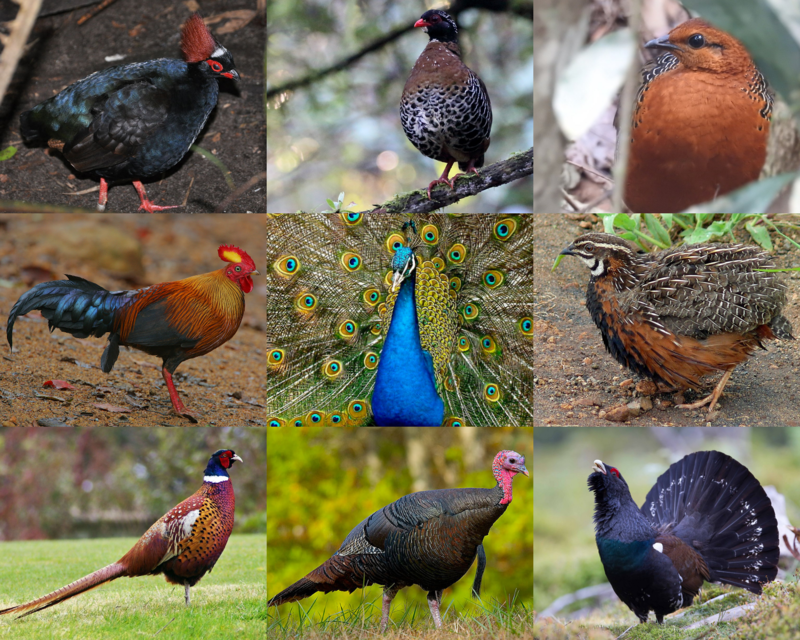
The Phasianidae family of birds is one that contains many popular gamebirds, with a total of 185 species divided across 54 genera.
These heavy ground-living birds include pheasants, partridges, junglefowl, chickens, and turkeys among others like Old World quail and peafowl.
This large family was formerly split into two subfamilies known as the Phasianinae and Perdicinae but this classification has since been changed to reflect more current scientific findings on them.
All these different types of birds have certain things in common such as their strong legs for scratching through leaves or soil looking for food items including insects, seeds, and other vegetation which makes up most of their diet.
They also all tend to be quite colorful in order to attract mates during breeding season when males will often display vibrant feathers or do dances around females in an attempt at courtship ritual displays.
The majority are monogamous creatures too although some may form short-term pair bonds before going off alone again once mating has taken place – either way.
There tends to be very little parental care given by adults after eggs have hatched so chicks need to fend for themselves right away.Scientific classification:
| Kingdom | Animalia |
| Phylum | Chordata |
| Class | Aves |
| Order | Galliformes |
| Superfamily | Phasianoidea |
| Family | Phasianidae Horsfield, 1821 |
Also Featured In: Most Common Birds in China, Ukrainian Birds You Should Know
2. Sandgrouse
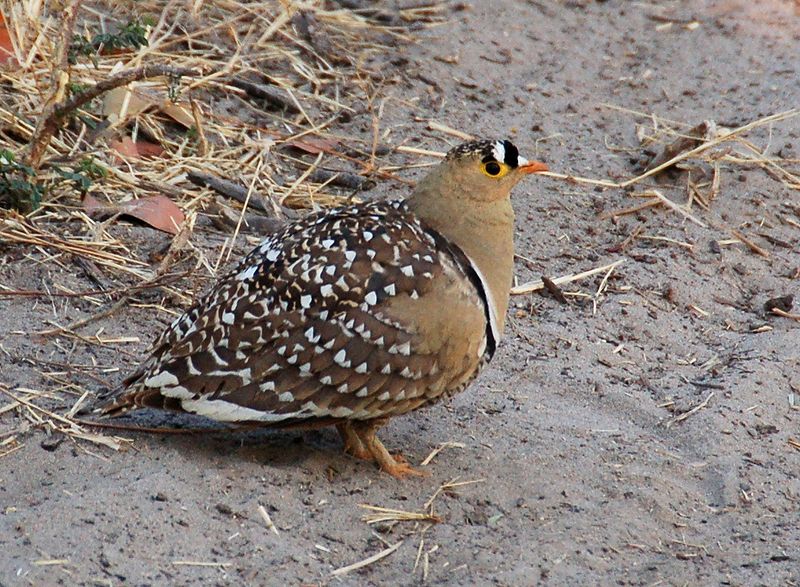
Sandgrouse is birds of the order Pterocliformes, found mainly in Africa and Asia. There are sixteen species belonging to two genera – Syrrhaptes from central Asia and Pterocles from Africa and other Asian countries.
They inhabit treeless areas such as deserts, steppes, scrubland, or savannas and tend to be ground-dwelling birds that feed on seeds.
Sandgrouse has adapted special features for survival in their harsh environment.
They possess well-developed feet with four toes used for walking over hot sand while keeping their body temperature cool at all times by regulating heat loss through their legs.
Their feathers also act like a sponge helping them absorb water before flying long distances back home where they then expel it using specialized glandular secretions located near the wings so that chicks can drink directly from an adult’s breast plumage.Scientific classification:
| Kingdom | Animalia |
| Phylum | Chordata |
| Class | Aves |
| Clade | Columbimorphae |
| Order | Pterocliformes Huxley, 1868 |
| Family | Pteroclidae Bonaparte, 1831 |
Also Featured In: Common Algerian Birds , Most Common Romanian Birds
3. Plovers

Plovers are a family of around 64-68 species of ground-dwelling birds, commonly found in open country such as fields, meadows and tundras.
They have short bills with webbed feet to help them forage through mud or shallow water.
Plover plumage is usually mottled brown though some species may have brighter colors on the head and wings.
These birds feed mainly on insects but can also eat small crustaceans and worms.
Plovers breed during springtime when they dig holes in sandy or pebbled beaches to lay their eggs which hatch after about 3 weeks incubation period.
They use distraction display behaviour by pretending an injury to the predators away from their nests if needed for protecting their young ones.Scientific classification:
| Kingdom | Animalia |
| Phylum | Chordata |
| Class | Aves |
| Order | Charadriiformes |
| Family | Charadriidae Leach, 1820 |
Also Featured In: Syrian Birds You Need to Know, Birds of Sweden
4. Glareolidae
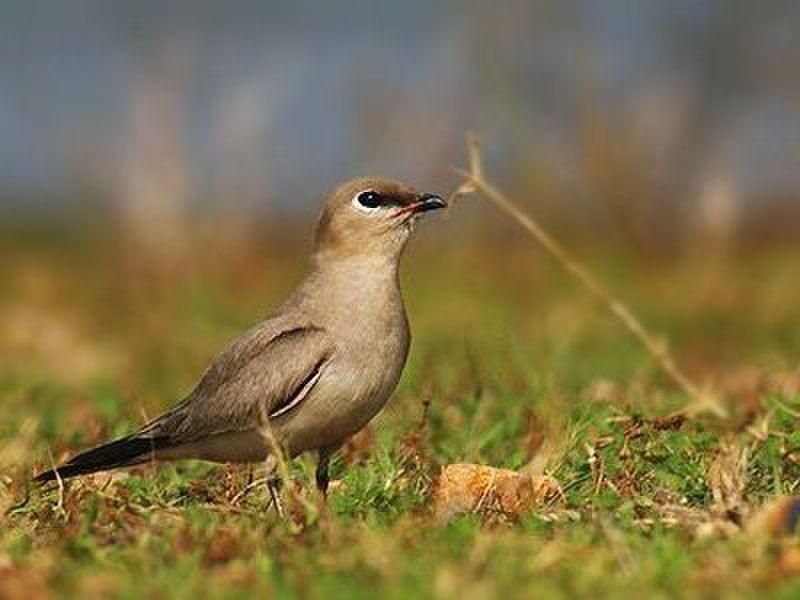
Glareolidae is a family of wading birds, consisting of four genera and 17 species. They are distinguished from other charadrii by their long bills which have a slight downward curve.
Glareolidae live around open grasslands and deserts, where they hunt for insects using the bill to probe into soil or vegetation.
Most species are found in Africa but two pratincoles inhabit parts of Europe and Asia as well.
Coursers tend to be larger than pratincoles with longer legs allowing them to run quickly across sandy dunes while feeding on small animals like lizards or spiders.
Pratincoles feed mainly on flying insects, snatching them out of midair with great agility during flight.
All glareolids share unique features such as large eyes that help it spot prey at night easily making this group one interesting bird family.Scientific classification:
| Kingdom | Animalia |
| Phylum | Chordata |
| Class | Aves |
| Order | Charadriiformes |
| Suborder | Lari |
| Family | Glareolidae CL Brehm, 1831 |
Also Featured In: Belarus Birds You Should Know, Lebanon Birds Live in Semi-Desert Areas
5. Bustard
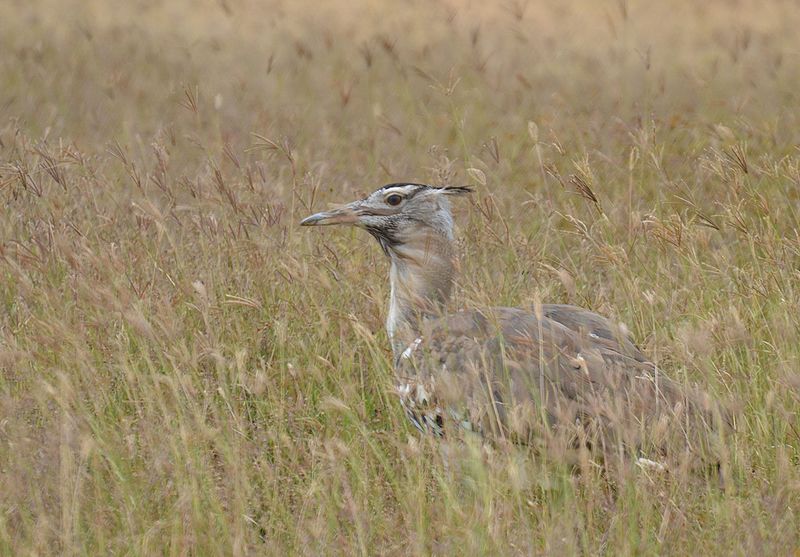
Bustards are large, terrestrial birds that inhabit dry grassland areas and the steppes of the Old World. They range from 40-150 cm in length and belong to the family Otididae.
Bustards have an omnivorous diet consisting of leaves, buds, seeds, fruit as well as small vertebrates and invertebrates.
These birds usually live a solitary life but can be seen gathering around water sources or food during certain times of year such as mating season.
Due to their large size they are vulnerable to predation by foxes or other animals which is why they tend to remain alert at all times.
When in open spaces while relying on camouflage for protection against predators when out in tall vegetation coverings.Scientific classification:
| Kingdom | Animalia |
| Phylum | Chordata |
| Class | Aves |
| Clade | Otidimorphae |
| Order | Otidiformes Wagler, 1830 |
| Family | Otididae Rafinesque, 1815 |
Also Featured In: Common Birds in India, Birds Found in Hungary
6. Bulbul
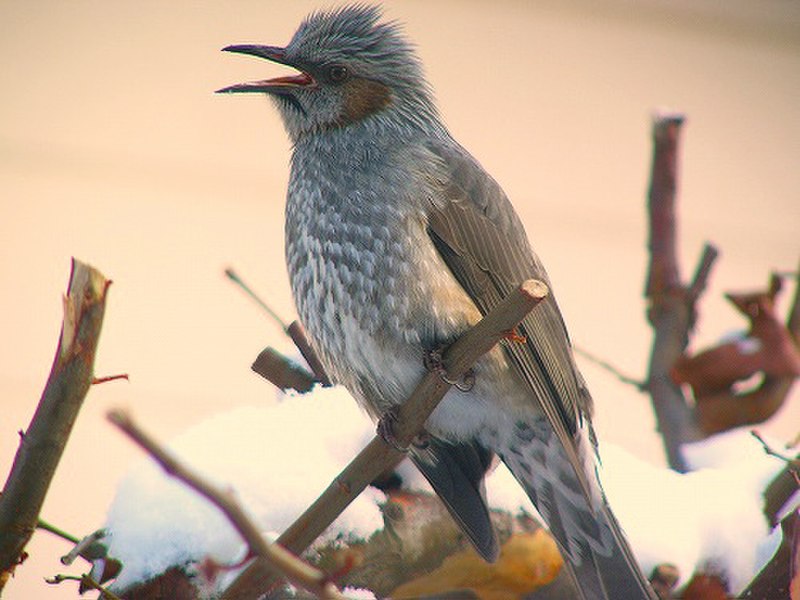
Bulbuls are a medium-sized passerine songbird family native to Africa, the Middle East and tropical Asia up until Japan. They can also be found on some of the Indian Ocean islands.
There are 160 species within 32 genera in this family which includes greenbuls, brownbuls, leafloves and bristlebills.
Bulbul birds have been known for their beautiful singing voices as well as for being very active during mating season when they gather together to create large flocks where potential mates can show off their skills.
The coloration of bulbuls range from dull greys or browns to vibrant yellows with black markings around the head region making them quite attractive creatures indeed.Scientific classification:
| Kingdom | Animalia |
| Phylum | Chordata |
| Class | Aves |
| Order | Passeriformes |
| Parvorder | Sylviida |
| Family | Pycnonotidae Gray, GR, 1840 |
Also Featured In: Birds You’ll Find in the Marshall Islands, Pet Birds that Live in India
7. Bar-Tailed Treecreeper
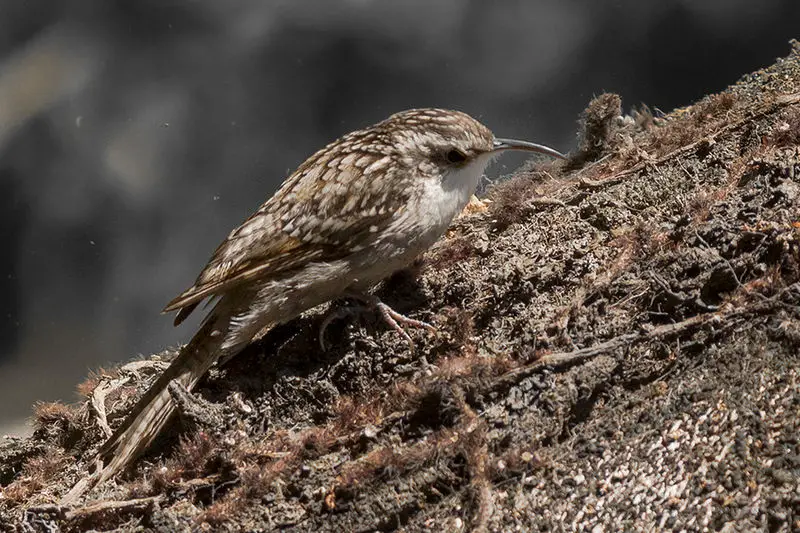
The Bar-tailed Treecreeper is a species of bird found in the northern parts of the Indian subcontinent, including Afghanistan, India, Iran and Nepal.
It has adapted to live mainly in coniferous forests and rocky hillsides at an altitude range from 1000m – 4500m.
Its plumage is generally greyish brown above with white underparts and rufous wings; it also bears a small bill which helps them seek out insects hidden deep within tree bark or cracks.
They are agile climbers who creep up trunks searching for food such as ants and other tiny invertebrates using their long curved claws.
The Himalayan Treecreeper can often be seen clambering around trees during its active hours between dawn till dusk making loud calls that sound like “chick chick”.Scientific classification:
| Kingdom | Animalia |
| Phylum | Chordata |
| Class | Aves |
| Order | Passeriformes |
| Family | Certhiidae |
| Genus | Certhia |
| Species | C. himalayana |
Also Featured In: Native Pakistani Birds,
8. Stone-Curlew

Stone-curlews, also known as dikkops or thick-knees, are a family of birds that have adapted to live in tropical and temperate regions throughout the world.
They can be found in Africa, Asia and Australia with two or more species per region. Despite being classified as waders, most prefer dry arid habitats over moist wetlands.
Stone-curlews typically have long legs which help them navigate through their preferred terrain efficiently; some species even stand at an impressive height when standing on those long legs.
Additionally they feature cryptic plumage which helps them blend into their surroundings while hunting for prey such as insects and small mammals like rodents.
These unique bird’s calls are easily recognizable; it has been said that hearing one is similar to listening to someone whistling ‘Keee Weee’.Scientific classification:
| Kingdom | Animalia |
| Phylum | Chordata |
| Class | Aves |
| Order | Charadriiformes |
| Suborder | Chionidi |
| Family | Burhinidae Mathews, 1912 |
Also Featured In: Beautiful Brazilian Birds, Bulgarian Birds
9. Old World Flycatchers
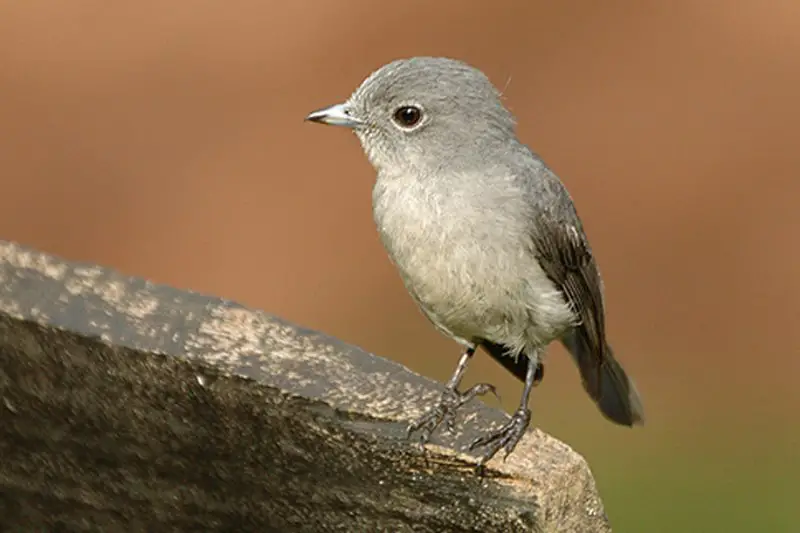
The Old World Flycatcher is a family of small passerine birds, native to Europe, Africa and Asia. They are mainly insectivorous arboreal birds that feed on insects they catch in the air or trees.
Their wingspan ranges from 5-11 inches long with males usually being slightly larger than females.
The coloration of these birds can range greatly depending on species but typically have dull greyish brown upperparts and pale undersides which help them blend into their environment for hunting purposes.
Bluethroat (Luscinia svecica) and Northern Wheatear (Oenanthe oenanthe) are two exceptions as they can be found in North America too.
These charming little creatures make fun additions to birdwatching lists all over the world because of their vibrant colors and interesting behaviors.Scientific classification:
| Kingdom | Animalia |
| Phylum | Chordata |
| Class | Aves |
| Order | Passeriformes |
| Superfamily | Muscicapoidea |
| Family | Muscicapidae Fleming J., 1822 |
Also Featured In: Common Birds in Japan, Most Common Lithuanian Birds
10. Shrike
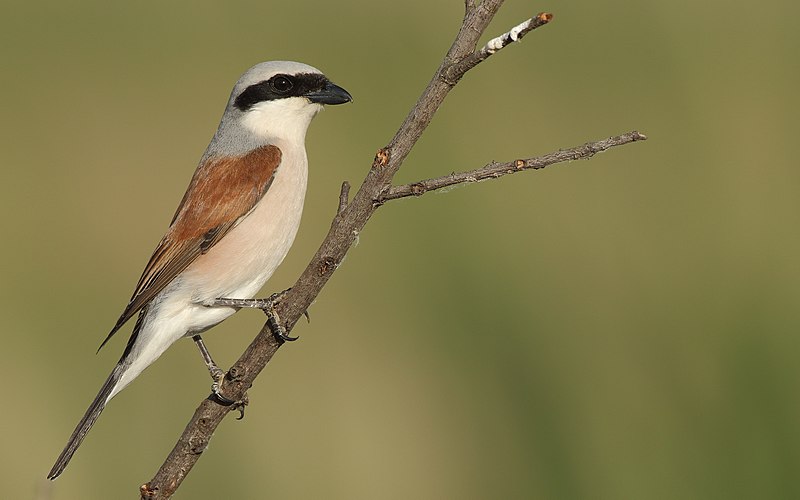
Shrikes are small passerine birds of the family Laniidae, with 34 species in four genera. They get their name from Old English word “scrīc”, which refers to their shriek-like call.
These birds have earned the nickname ‘butcherbirds’ due to their feeding habits; they impale prey on thorns or barbed wire fences for later consumption.
Shrikes also tend to be aggressive predators and hunt a wide range of animals such as insects, small reptiles, rodents and even other smaller bird species.
In terms of physical appearance, these songbirds can vary greatly depending on the specific genus but usually boast a large hooked bill atop an impressive crest along with bright colors like gray, black or brownish hues across its feathers.
It’s clear shrike is quite remarkable creature that has gained notoriety for both hunting prowess and distinctive vocalizations.Scientific classification:
| Kingdom | Animalia |
| Phylum | Chordata |
| Class | Aves |
| Order | Passeriformes |
| Superfamily | Corvoidea |
| Family | Laniidae Rafinesque, 1815 |
Also Featured In: Egyptian Birds, Common Denmark Birds
11. Hoopoes
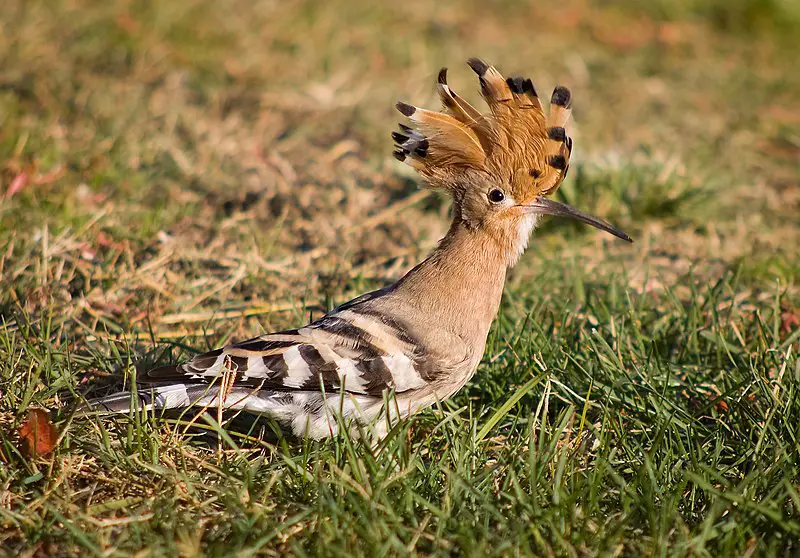
Hoopoes are a fascinating species of bird, found across Africa, Asia and Europe. They have beautiful plumage with unique ‘crowns’ of feathers on their heads.
Three living and one extinct species exist – although for some time they were all classed as the same species: Upupa epops. Some taxonomists still believe this to be true.
These birds are often associated with royalty due to the impressive crown-like crest atop their head, adding an extra element of mystery and exoticism to these creatures.
Hoopoes can also produce loud calls which sound like “hoo-poo” hence why they’ve been given such an apt name.Scientific classification:
| Kingdom | Animalia |
| Phylum | Chordata |
| Class | Aves |
| Order | Bucerotiformes |
| Family | Upupidae Leach, 1820 |
| Genus | Upupa Linnaeus, 1758 |
Also Featured In: Birds that Live in Croatia, African Birds
12. Old World Orioles
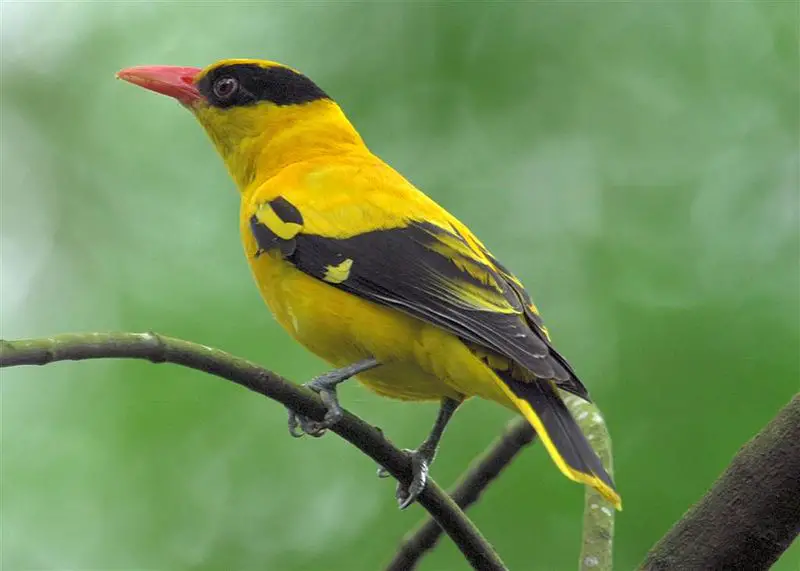
Old World orioles are a family of passerine birds found in the Old World. It comprises four genera: piopios, figbirds, pitohuis and the original genus Oriolus.
The African black-headed species have sometimes been removed from this latter group due to their distinct characteristics as well as other proposed splits for Oriolus.
These colorful birds can be identified by their bright yellow or orange plumage that often features darker markings on wings and head areas, although some species may also display a blue hue or stripes across the body feathers.
They typically feed on insects such as caterpillars and grasshoppers but will supplement with small fruits when available too – making them beneficial additions to gardens.Scientific classification:
| Kingdom | Animalia |
| Phylum | Chordata |
| Class | Aves |
| Order | Passeriformes |
| Superfamily | Orioloidea |
| Family | Oriolidae Vigors, 1825 |
Also Featured In: Birds You’ll Find in Moldova, Birds Commonly Found in Slovenia
13. European Roller
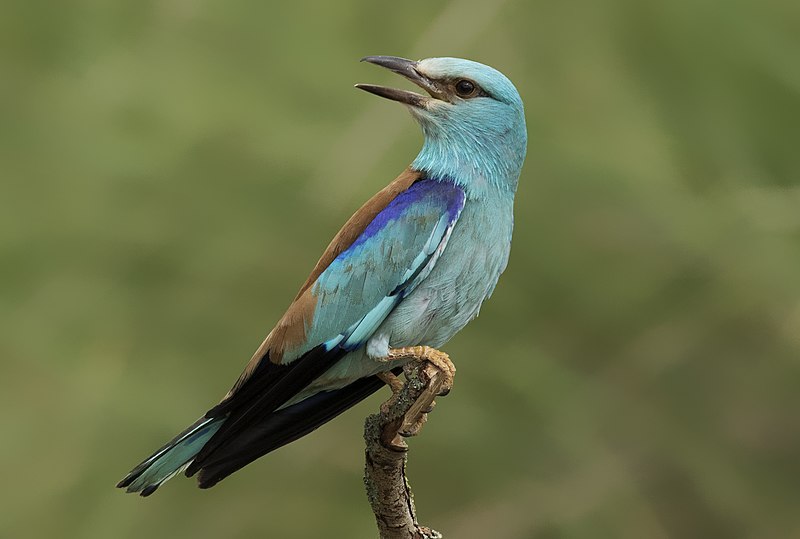
The European roller is a beautiful bird belonging to the Coracias family, and it’s the only one of its kind found in Europe.
It inhabits various habitats such as dry wooded savanna, bushy plains and other areas except for treeless ones.
During wintertime they usually nest in tree holes, while their range extends into Middle East, Central Asia and Maghreb regions.
They have vibrant blue feathers with black stripes along the neck area which makes them stand out from other birds easily.
Its diet consists mainly of insects like grasshoppers or beetles that are hunted by catching them mid-air during flight; this feature adds an extra charm to these magnificent creatures.Scientific classification:
| Kingdom | Animalia |
| Phylum | Chordata |
| Class | Aves |
| Order | Coraciiformes |
| Family | Coraciidae |
| Genus | Coracias |
| Species | C. garrulus |
Also Featured In: Most Common Spain Birds,
14. Eurasian Wryneck
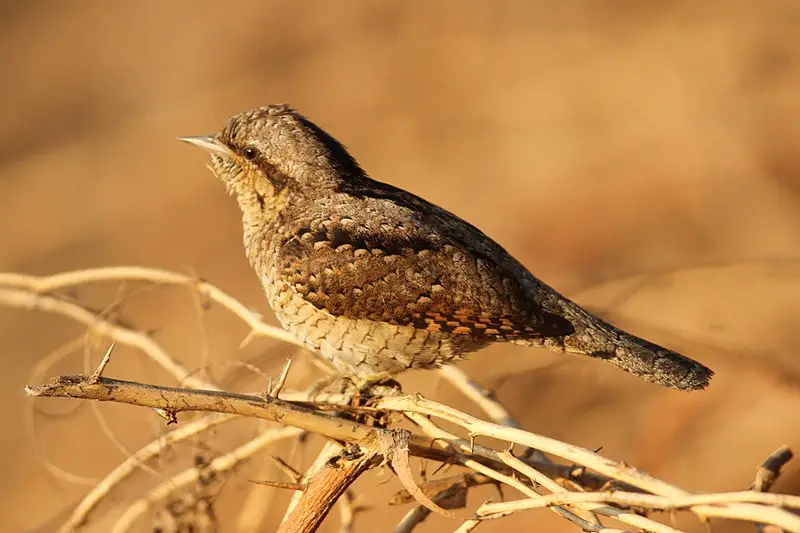
The Eurasian Wryneck is a species of woodpecker found in temperate regions of Europe and Asia. They breed during the summer months, but migrate south to tropical Africa or southern Asia for winter.
These birds are quite adaptable when it comes to their habitat, as they can be seen in open countryside, woodland, orchards and gardens alike.
To identify them you should look out for their distinctive brownish-grey feathers with black bars on the wings and tail; males also have red markings around their neck too.
Their diet consists mainly of insects which they find by probing into loose bark on trees or digging through soil with its sharp bill.
All in all an amazing bird that deserves more attention.Scientific classification:
| Kingdom | Animalia |
| Phylum | Chordata |
| Class | Aves |
| Order | Piciformes |
| Family | Picidae |
| Genus | Jynx |
| Species | J. torquilla |
Also Featured In: Native Birds Of Germany, Common Slovakian Birds
15. Bearded Reedling
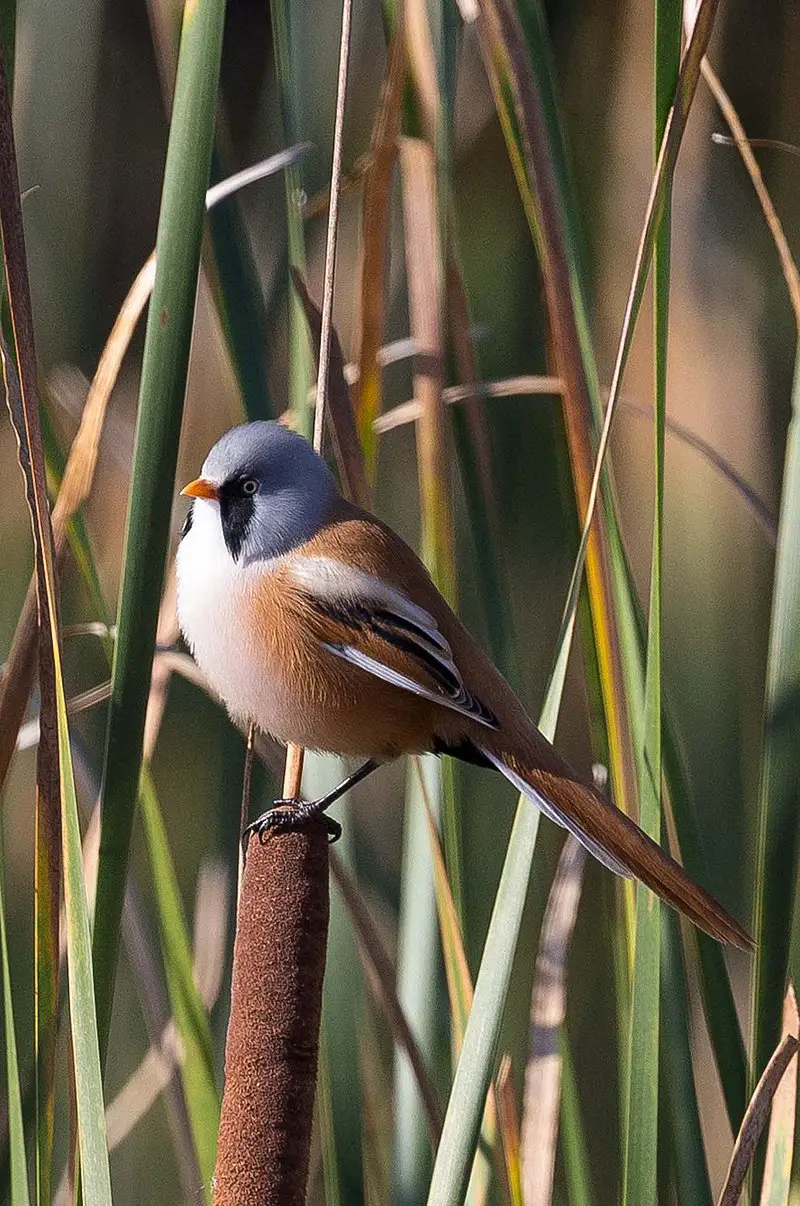
The Bearded Reedling is a small passerine bird found in reed-beds across Europe, Asia and North Africa.
It is easily identified by its distinct black and white plumage with males having yellow faces.
This species belongs to the only family of birds known as Panuridae and was first described by Carl Linnaeus back in 1758.
They feed on insects such as beetles, flies, moths among others but also consume seeds from plants like sedges or rushes during winter months when food availability decreases significantly.
These birds are territorial meaning that they have their own area where they live which can vary from 8 to 12 hectares depending on the seasonality of insect abundance within these areas making them an important part for maintaining healthy ecosystems in wetlands around their range.Scientific classification:
| Kingdom | Animalia |
| Phylum | Chordata |
| Class | Aves |
| Order | Passeriformes |
| Family | Panuridae Des Murs, 1860 |
| Genus | Panurus Koch, 1816 |
| Species | P. biarmicus |
Also Featured In: Birds of United Kingdom, Birds You’ll Find in Albania
16. Threskiornithidae
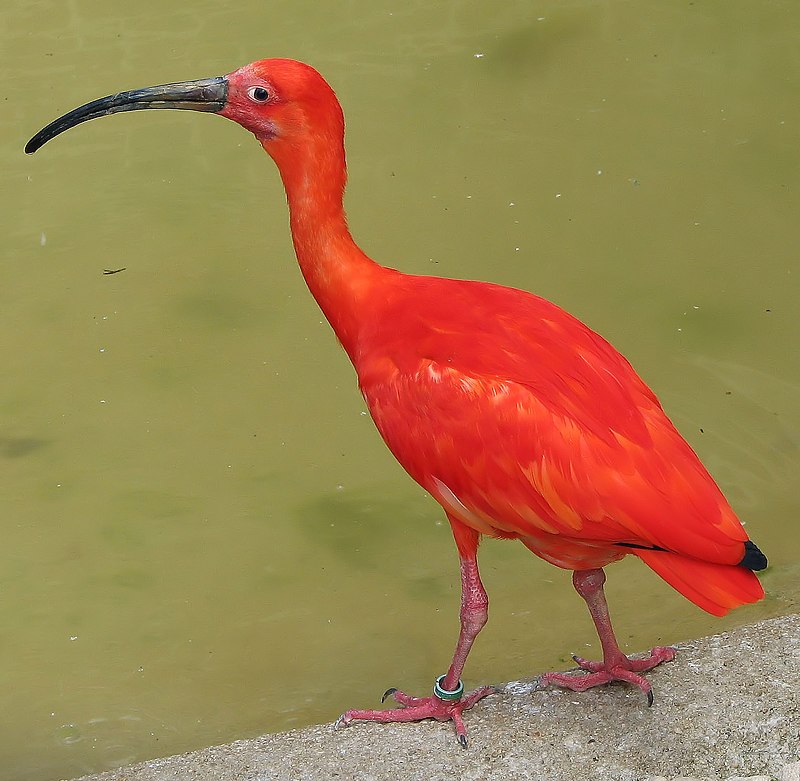
Threskiornithidae is a family of large wading birds which includes 36 species. These birds are traditionally divided into two subfamilies – the ibises and the spoonbills.
However, recent genetic analysis has shown that spoonbills actually belong to Old World ibis group, while New World ibises form an early offshoot from this lineage.
Threskiornithidse members have long curved beaks with serrated edges used for catching fish in shallow water or mudflats, as well as other aquatic invertebrates like crustaceans and mollusks.
They also feed on plant matter such as grains and seeds found close to wetlands areas where they live.
This diverse diet makes them important scavengers in their ecosystems, helping maintain healthy populations of native wildlife by controlling insect numbers and dispersing energy-rich seeds throughout wetland habitats.Scientific classification:
| Kingdom | Animalia |
| Phylum | Chordata |
| Class | Aves |
| Order | Pelecaniformes |
| Suborder | Ardei |
| Family | Threskiornithidae Richmond, 1917 |
Also Featured In: Most common Birds in France, Common Estonian Birds
17. Falcons And Caracaras
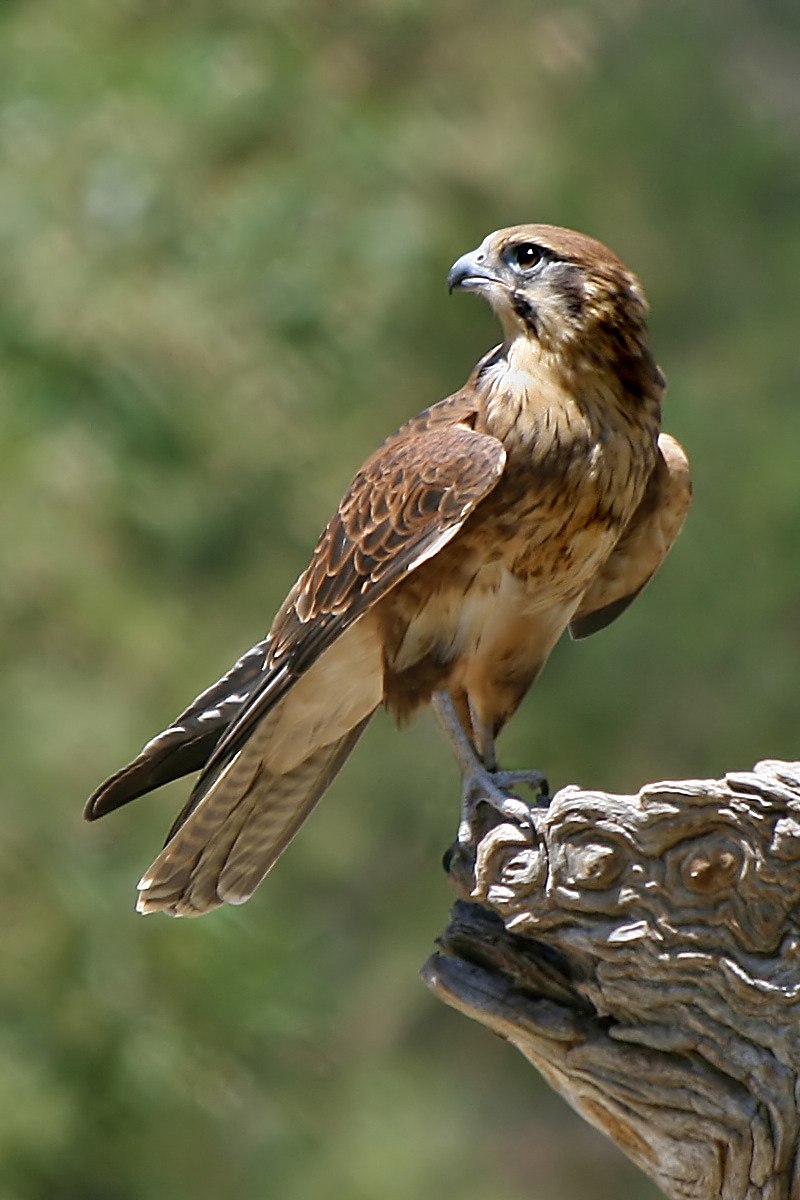
Falcons and caracaras are birds of prey that belong to the family Falconidae. They have impressive sharp talons, hooked beaks and keen eyesight which makes them excellent hunters.
Falcons can reach speeds up to 200 mph when diving for their prey while caracaras use a combination of running and flying to hunt small mammals such as rabbits or rats.
Both falcons and caracaras live in various areas around the world from grasslands, deserts, forests, wetlands or even urban areas where they nest on cliffs or tall buildings.
The diet mainly consists insects but also includes larger animals like reptiles or other birds which they catch by surprise with fast dives out of the sky.Scientific classification:
| Kingdom | Animalia |
| Phylum | Chordata |
| Class | Aves |
| Order | Falconiformes |
| Family | Falconidae Leach, 1820 |
Also Featured In: Native South Korean Birds, Birds of Latvia
18. Glossy Ibis
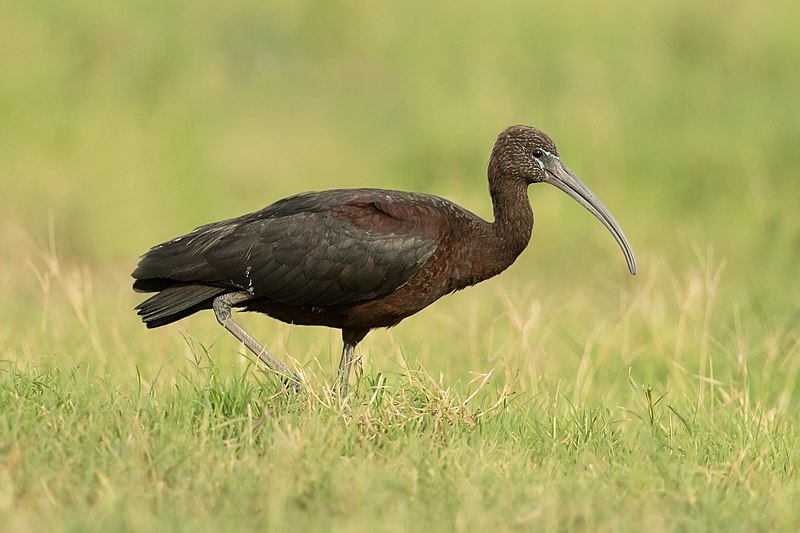
The Glossy Ibis is a water bird that belongs to the family Threskiornithidae. It has an unique bill in the shape of a sickle, which gave it its scientific name – Plegadis falcinellus.
It can be found widely across Europe, Asia and Africa, with scattered nesting sites in warm regions.
Its feathers are black-brown on top and chestnut brown from below; their wings have glossy greenish-purple sheen when seen from afar.
They mainly feed on small insects like grasshoppers, spiders or earthworms as well as crustaceans or amphibians caught while wading through shallow waters.
During breeding season they also consume plant material such as rice grains or corn kernels provided by humans near habitat areas where they nest.Scientific classification:
| Kingdom | Animalia |
| Phylum | Chordata |
| Class | Aves |
| Order | Pelecaniformes |
| Family | Threskiornithidae |
| Genus | Plegadis |
| Species | P. falcinellus |
Also Featured In: Uganda Birds Species, Water Birds Live around Us
19. Streaked Scrub Warbler
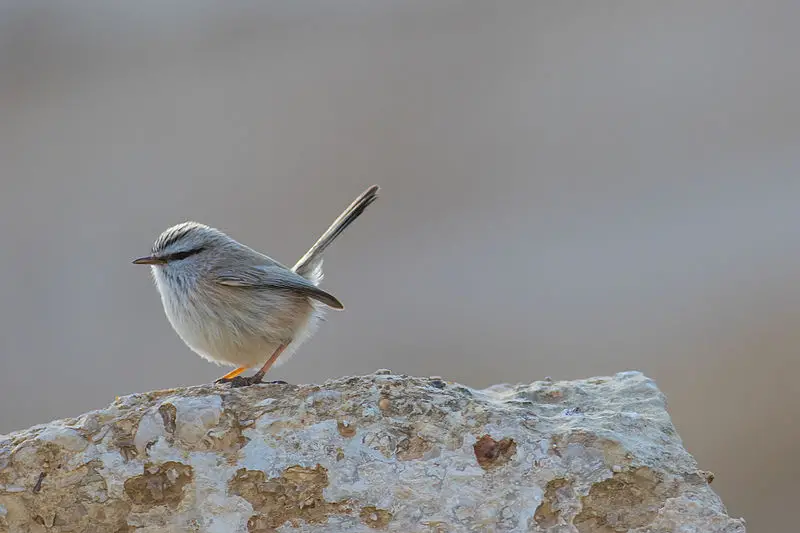
The Streaked Scrub Warbler is a small passerine bird, found in northern Africa and southwestern Asia.
It frequents scrubby areas, ravines and gorges near deserts, remaining mainly resident but with possible local movements outside the breeding season.
This species has grayish-brown upperparts streaked with black lines or bars forming an intricate pattern across its back; whitish underparts are also marked by dark streaks on the breast.
Its diet consists of insects which it catches from low vegetation while making short flights over them to capture prey as well as gleaned items from branches or foliage surface foraged on foot.
The Streak Scrub Warbler is quite vocal throughout the year giving various trills and whistles that sound like “seet”.Scientific classification:
| Kingdom | Animalia |
| Phylum | Chordata |
| Class | Aves |
| Order | Passeriformes |
| Family | Scotocercidae Fregin, Haase, Olsson, & Alström, 2012 |
| Genus | Scotocerca Sundevall, 1872 |
| Species | S. inquieta |
Also Featured In: Native Birds of Afghanistan,
20. See-See Partridge

The See-see Partridge is a gamebird belonging to the pheasant family. It can be found across southeast Turkey, Syria, Iraq, Iran and Pakistan.
This bird measures around 22–25 cm in length and has greyish plumage with a dark chestnut coloured throat patch.
Its closest relative is the Sand Partridge which can be found in Egypt and Arabia.
The See-see partridge lives mainly on open ground where it feeds on insects while scratching for seeds or other plant material amongst the vegetation cover.
It makes its nest among rocks or low bushes laying up to 10 eggs at once which are incubated by both parents who also care for their young until they fledge about 4 weeks later.
Despite being hunted as food source this species remains relatively common across its range but threats from habitat destruction could put them under threat in future years.Scientific classification:
| Kingdom | Animalia |
| Phylum | Chordata |
| Class | Aves |
| Order | Galliformes |
| Family | Phasianidae |
| Genus | Ammoperdix |
| Species | A. griseogularis |
21. Blue-Capped Redstart
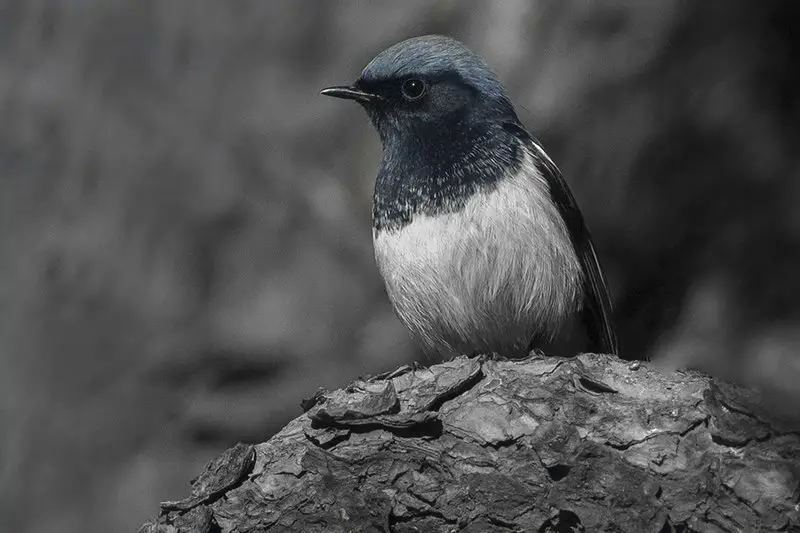
The Blue-capped redstart is a striking bird found throughout the Himalayas and northern parts of India. This beautiful species has an unmistakable blue cap, grey back, white throat and black wings with bright orange patches on them.
It can often be seen flitting around in open areas such as fields or scrubland, while its song consists of loud trills and rattles.
The diet mainly consists of insects which it catches by flying after them from a perch before returning to the same spot afterwards.
They are monogamous birds who form strong pairs during breeding season when they build cup shaped nests made out of grasses near streams or ponds for their young ones to hatch in safety. A truly remarkable sight that deserves respect.Scientific classification:
| Kingdom | Animalia |
| Phylum | Chordata |
| Class | Aves |
| Order | Passeriformes |
| Family | Muscicapidae |
| Genus | Phoenicurus |
| Species | P. coeruleocephala |
22. Marbled Duck
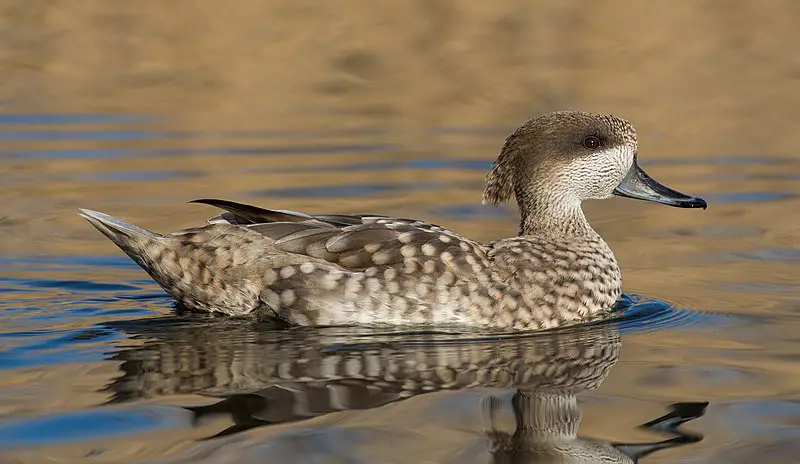
The Marbled duck is a medium-sized species of waterfowl native to southern Europe, northern Africa, and western and central Asia.
It gets its name from the marbling pattern on its feathers which give it an eye-catching mottled appearance.
The scientific name comes from Greek and Latin words meaning “marble”, “duck”, “narrow or small” and ‘billed’ respectively.
In the past these ducks bred in large numbers throughout the Mediterranean region but their population has declined due to human activities such as hunting for sport as well as habitat destruction.
Conservation efforts are underway in order to protect this beautiful bird so that future generations can still enjoy seeing them around.Scientific classification:
| Kingdom | Animalia |
| Phylum | Chordata |
| Class | Aves |
| Order | Anseriformes |
| Family | Anatidae |
| Genus | Marmaronetta Reichenbach, 1853 |
| Species | M. angustirostris |
Also Featured In: Birds of Morocco,
23. Sylviid Warblers
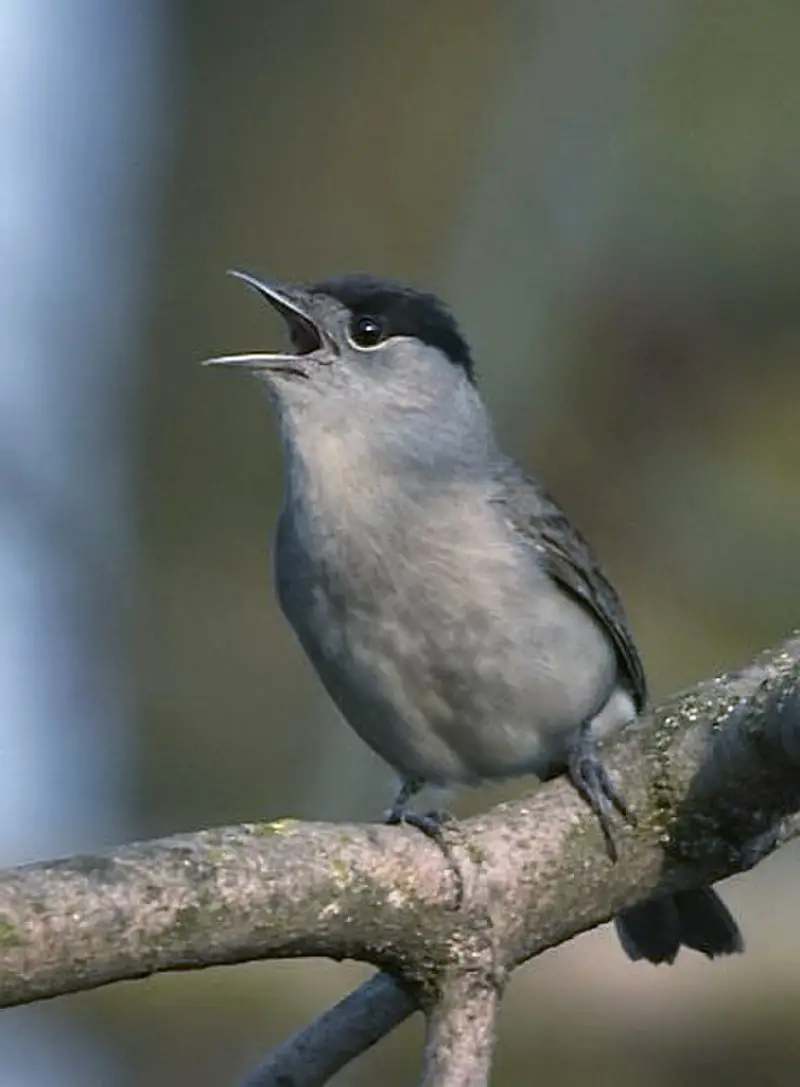
The Sylviid warblers are a family of passerine birds found in Eurasia and Africa. They include the typical warblers as well as babblers that were formerly part of the Old World babbler family.
These birds have slender bodies, pointed wings, long tails and strong legs adapted for ground-dwelling habits like running or hopping along branches.
The male often has bright colors while females are usually duller in coloration with more muted plumage patterns than males.
Some species also show sexual dimorphism where one sex may be larger or smaller than its counterpart; for instance some species may have longer tail feathers on the female side compared to their male counterparts.
Many members of this group feed on insects but some specialize on seeds, fruits, nectar or even frogs.Scientific classification:
| Kingdom | Animalia |
| Phylum | Chordata |
| Class | Aves |
| Order | Passeriformes |
| Superfamily | Sylvioidea |
| Family | Sylviidae Leach, 1820 |
Also Featured In: Birds that Live in Montenegro, Birds that Live in Greenland
24. Long-Tailed Tits
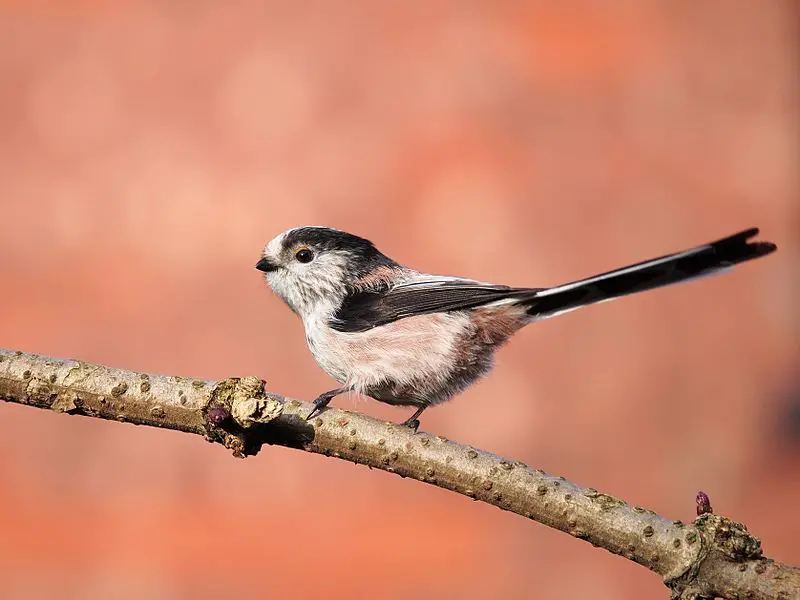
Long-tailed tits are a small passerine bird family with long tails compared to their size. They have 13 species in 3 genera, and they mostly live in Eurasia.
These birds love to stay active by foraging for insects among shrubs and trees throughout the day.
During non-breeding season, these birds can be found living together in large flocks of up to 50 individuals.
These playful little creatures make wonderful companions due to their social nature and cheerful personalities.
Their bright plumage also adds a beautiful splash of colour wherever they go.Scientific classification:
| Kingdom | Animalia |
| Phylum | Chordata |
| Class | Aves |
| Order | Passeriformes |
| Superfamily | Sylvioidea |
| Family | Aegithalidae Reichenbach, 1850 |
Also Featured In: Small Birds of California,
25. Treecreepers

Treecreepers are small passerine birds found in wooded areas of the Northern Hemisphere and sub-Saharan Africa.
They have dull colored plumage, long curved bills, stiff tails and strong feet that help them to climb up tree trunks while searching for food such as insects and spiders.
The two genera Certhia and Salpornis include eleven species which can be identified by their distinct call – a high pitched ‘tsee-tsit’.
Treecreepers build cup shaped nests on trees usually near the base or middle trunk using mosses, lichens, grasses with leaves inside them to provide insulation from cold temperatures.
These birds also use bark crevices during winter months when they shelter in groups together against extreme weather conditions.Scientific classification:
| Kingdom | Animalia |
| Phylum | Chordata |
| Class | Aves |
| Order | Passeriformes |
| Superfamily | Certhioidea |
| Family | Certhiidae Leach, 1820 |
Also Featured In: Flocks Birds around Us, Birds that Live in Newfoundland and Labrador
26. Laughingthrushes
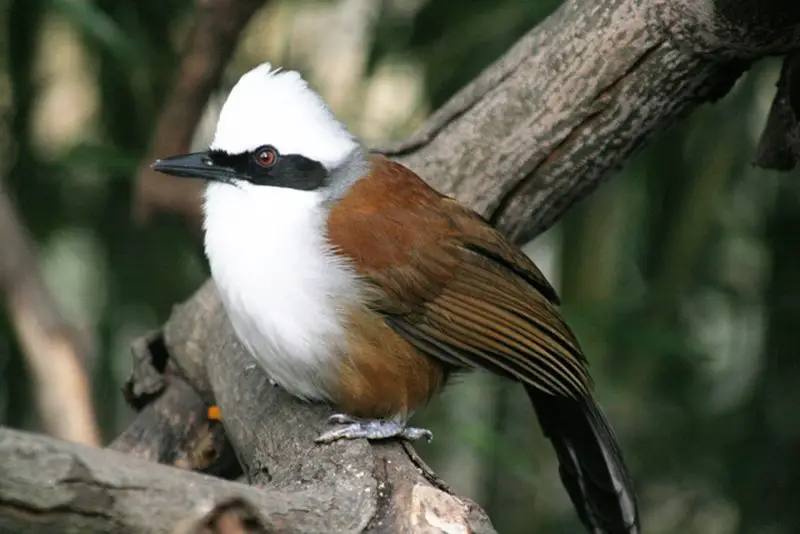
Laughingthrushes are a family of passerine birds found in tropical areas, primarily Southeast Asia and the Indian subcontinent.
They vary greatly in size and coloration but generally they have strong legs and many species are terrestrial or semi-terrestrial.
These birds typically inhabit forests where they feed on insects, fruits, seeds and occasionally small vertebrates.
The diet varies depending on the species as some prefer to forage among foliage while others look for food along the forest floor or take it from trees high up in their habitat.
In general these active creatures live in flocks that can range from just a few individuals to large groups with dozens of members making them quite vocal at times.Scientific classification:
| Kingdom | Animalia |
| Phylum | Chordata |
| Class | Aves |
| Order | Passeriformes |
| Superfamily | Sylvioidea |
| Family | Leiothrichidae Swainson, 1832 |
Also Featured In: Most Common Taiwan Birds, Birds that Found in Sumatra
27. Blue-Cheeked Bee-Eater
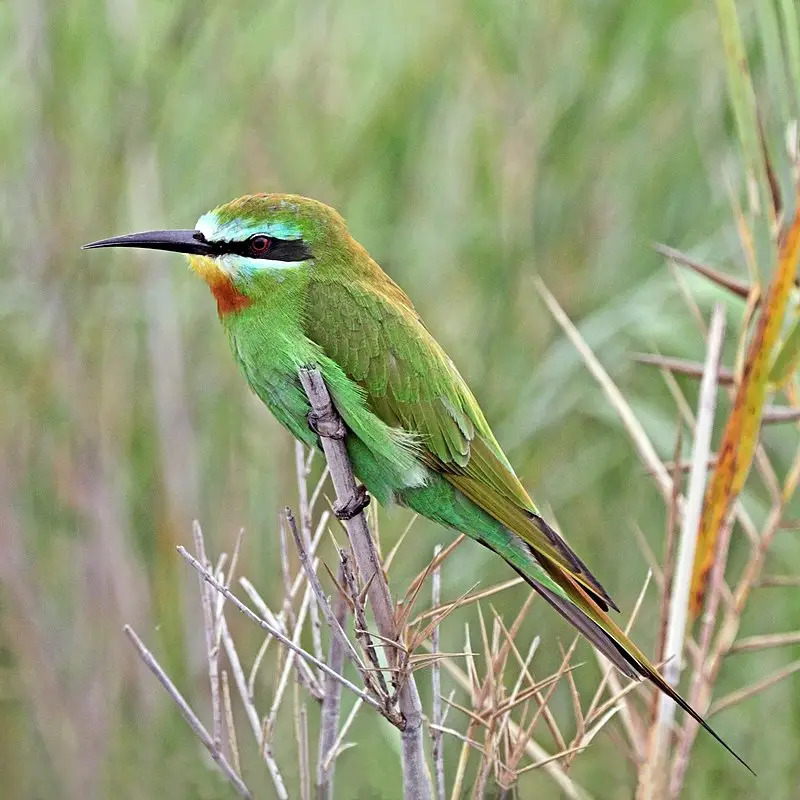
The Blue-cheeked Bee-eater (Merops persicus) is a stunningly beautiful bird belonging to the Meropidae family. It has an unmistakeable blue coloring on its cheeks and neck, which stands out against its yellow body plumage.
This species of bee-eater can be found in Northern Africa, Middle East countries from Turkey eastwards till Kazakhstan, and India as well.
During winter they migrate south to tropical regions of Africa while some populations remain put for breeding purposes year round.
They are adept at catching insects midair with their long curved bills which makes them excellent predators in open grasslands or savannas where bees and other insects thrive abundantly.
So if you ever happen across these vibrant beauties make sure to take a moment pause and appreciate nature’s wonders.Scientific classification:
| Kingdom | Animalia |
| Phylum | Chordata |
| Class | Aves |
| Order | Coraciiformes |
| Family | Meropidae |
| Genus | Merops |
| Species | M. persicus |
Also Featured In: Birds that Migrate in United Arab Emirates,
28. Streaked Laughingthrush
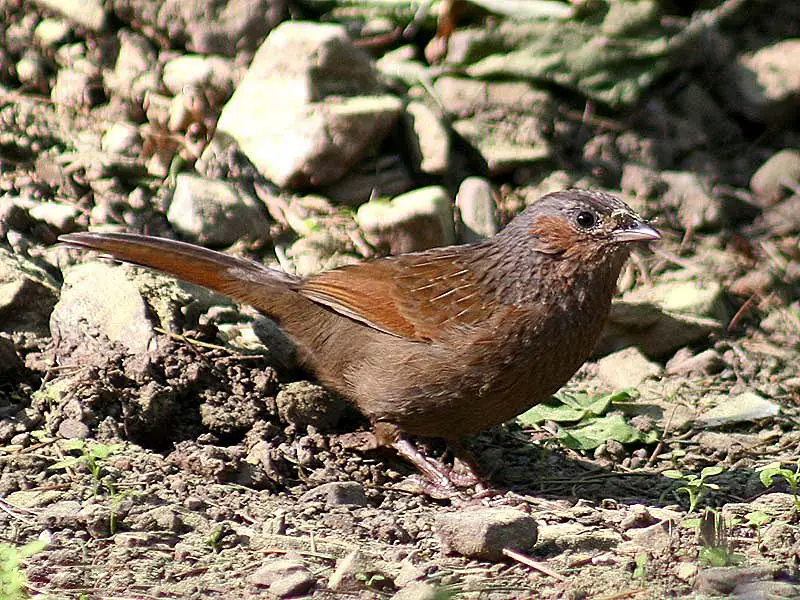
The Streaked Laughingthrush is a species of bird found mainly in the northern regions of the Indian subcontinent and some adjoining areas, such as Afghanistan, Bhutan, India, Nepal, Pakistan, Russia and Tajikistan.
It has distinctive white stripes on its head and back that contrast with its rufous-brown feathers. The birds usually inhabit dense forests where they feed on insects among other things.
They are social creatures often seen foraging together in flocks or pairs during daytime hours though they may also be active nocturnally too.
The subspecies imbricatum is sometimes considered to be a separate species; the Bhutan laughingthrush.
In Kullu Manali region it can commonly be spotted around water sources like rivers or streams looking out for food items while making their characteristic “laughing” call which helps them communicate with one another over long distances.Scientific classification:
| Kingdom | Animalia |
| Phylum | Chordata |
| Class | Aves |
| Order | Passeriformes |
| Family | Leiothrichidae |
| Genus | Trochalopteron |
| Species | T. lineatum |
Also Featured In: Common Birds Found in Nepal,
29. Motacillidae
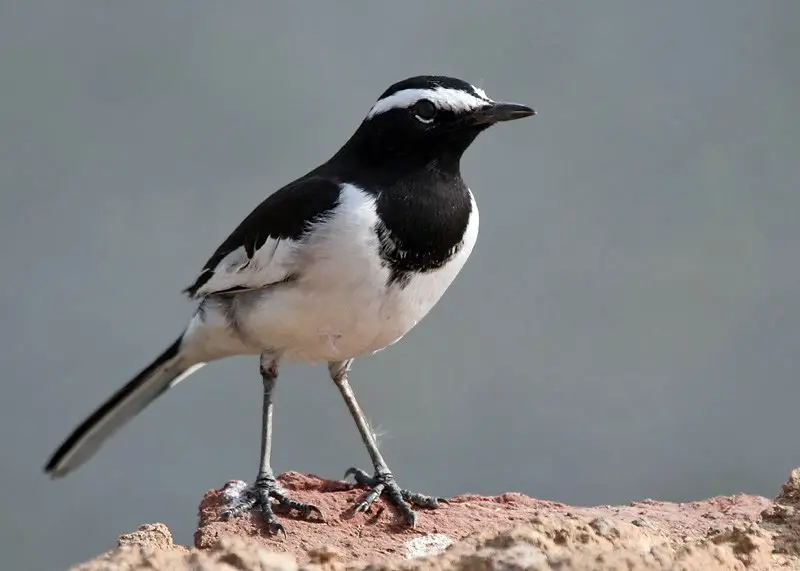
Motacillidae is a family of small passerine birds consisting of around 70 species. They are found across Europe, Africa, Asia and even Alaska with two migratory breeding species.
The three genera they belong to include wagtails which typically have medium to long tails; longclaws that can only be spotted in the Afrotropics; and pipits which possess the most cosmopolitan distribution worldwide.
These birds feed on insects as well as seeds for their diets and are usually seen in open habitats such grasslands or wetlands where food sources like invertebrates can easily be accessed.
Most Motacillidae species also use mud nests during breeding season making them easy targets for predators so it’s important we protect these beautiful creatures.Scientific classification:
| Kingdom | Animalia |
| Phylum | Chordata |
| Class | Aves |
| Order | Passeriformes |
| Superfamily | Passeroidea |
| Family | Motacillidae Horsfield, 1821 |
Also Featured In: Birds of Belgium, Guam Birds You Need to See
30. Penduline Tits
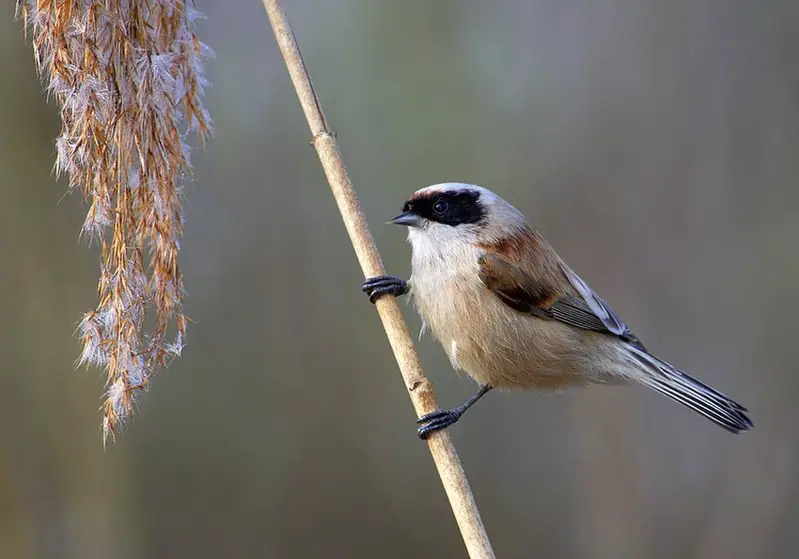
Penduline tits are small passerines with a length ranging from 7.5 to 11 cm, resembling true tits (Paridae). They have delicate bills with needle-like points and their wings appear short and rounded.
These birds build elaborate bag nests that hang from trees over water, giving them the name of “penduline” – meaning hanging. As for diet, they mainly feed on insects and spiders but may also consume some seeds too.
Depending on the species, penduline tits can be found in sub-Saharan Africa or across Eurasia into China and Central Asia as well as parts of North America such as California’s Sierra Nevada range halfway up Mexico’s western coast.Scientific classification:
| Kingdom | Animalia |
| Phylum | Chordata |
| Class | Aves |
| Order | Passeriformes |
| Infraorder | Passerida |
| Family | Remizidae Olphe-Galliard, 1891 |
Also Featured In: Birds of Czech Republic, Most Common Birds of Corsica
31. Booted Warbler
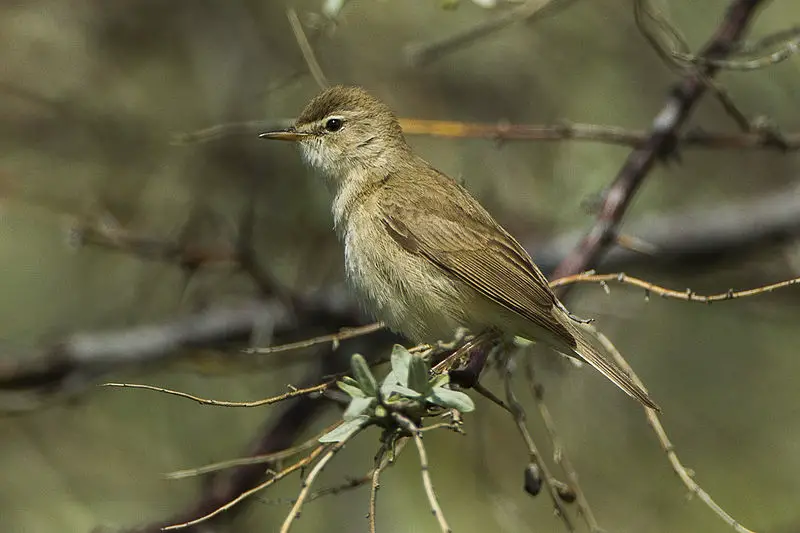
The Booted Warbler is an Old World warbler belonging to the tree warbler group.
It breeds in central Russia and western China, migrating south for wintering grounds as far away as Sri Lanka.
These small birds are mainly olive-green on top with a yellowish belly and have white patches above their eyes which give them a distinctive ‘booted’ appearance.
They feed by gleaning insects from foliage or flycatchers from midair during migration times.
Their song is composed of high-pitched trills often sung duet style between mates, making it easy to identify this species in its habitat range.Scientific classification:
| Kingdom | Animalia |
| Phylum | Chordata |
| Class | Aves |
| Order | Passeriformes |
| Family | Acrocephalidae |
| Genus | Iduna |
| Species | I. caligata |
32. Pelicans

Pelicans are a family of birds within the pelecani order, with two genera: Eopelecanus (extinct) and Pelecanus (still existing). They have been around since the late Eocene period — over 40 million years ago.
Pelicans are large waterbirds that can be found in both temperate and tropical regions all over the world.
Their most distinctive feature is their enormous pouched bills; they use these to scoop up fish from rivers or lakes as part of their diet.
These majestic creatures come in various colors, including white, grey, black and browns. When flying in formation they look like an arrow pointing towards its destination.
Pelicans usually live near bodies of water but may also migrate long distances when food resources become scarce during winter months.Scientific classification:
| Kingdom | Animalia |
| Phylum | Chordata |
| Class | Aves |
| Order | Pelecaniformes |
| Family | Pelecanidae Rafinesque, 1815 |
Also Featured In: Most Beautiful birds of Greece, Birds that You’ll find in Perth
33. Drongos
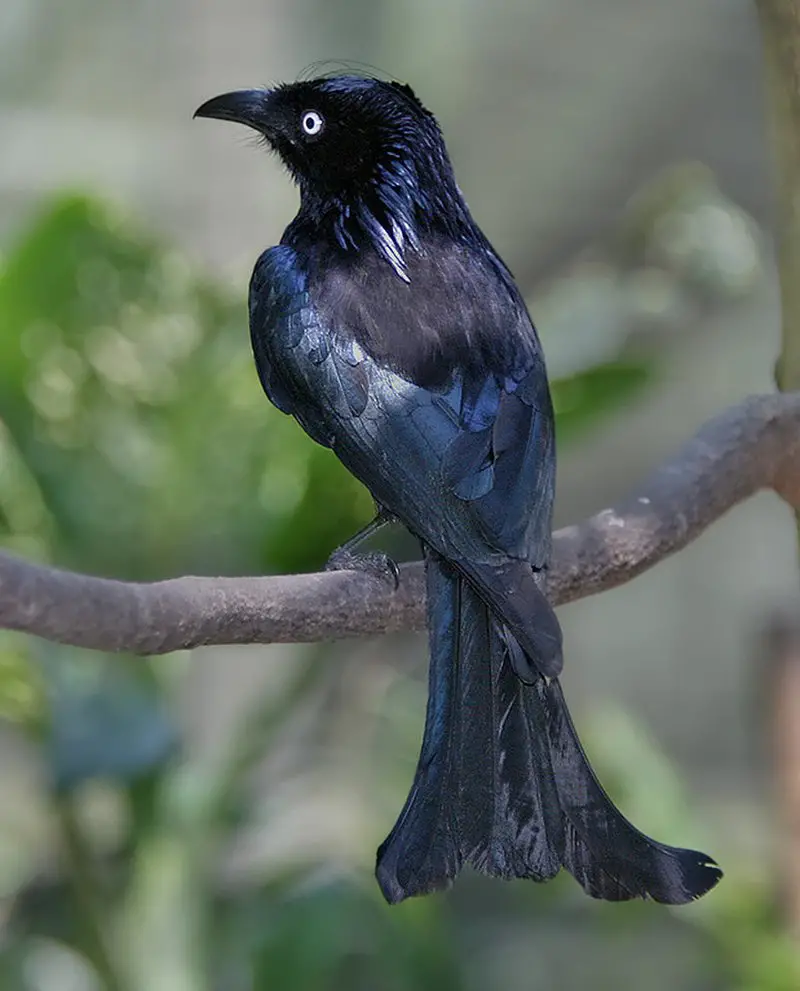
Drongos are an Old World tropical family of passerine birds belonging to the Dicruridae genus.
They have short legs, forked tails and a distinctive upright stance when perched.
Depending on the species they may be mostly black or dark grey in colour with some having elaborate tail decorations.
Drongos feed mainly on insects and small birds – catching them both in flight and from the ground.
They also sometimes eat fruit, nectar and even carcasses.
The drongo’s unique adaptations make it one of nature’s most successful hunters; able to survive almost anywhere in their natural range across Africa, Asia & Australia.Scientific classification:
| Kingdom | Animalia |
| Phylum | Chordata |
| Class | Aves |
| Order | Passeriformes |
| Superfamily | Corvoidea |
| Family | Dicruridae Vigors, 1825 |
| Genus | Dicrurus Vieillot, 1816 |
Also Featured In: Birds of United Arab Emirates, Savanna Birds You Need to See
34. Isabelline Shrike
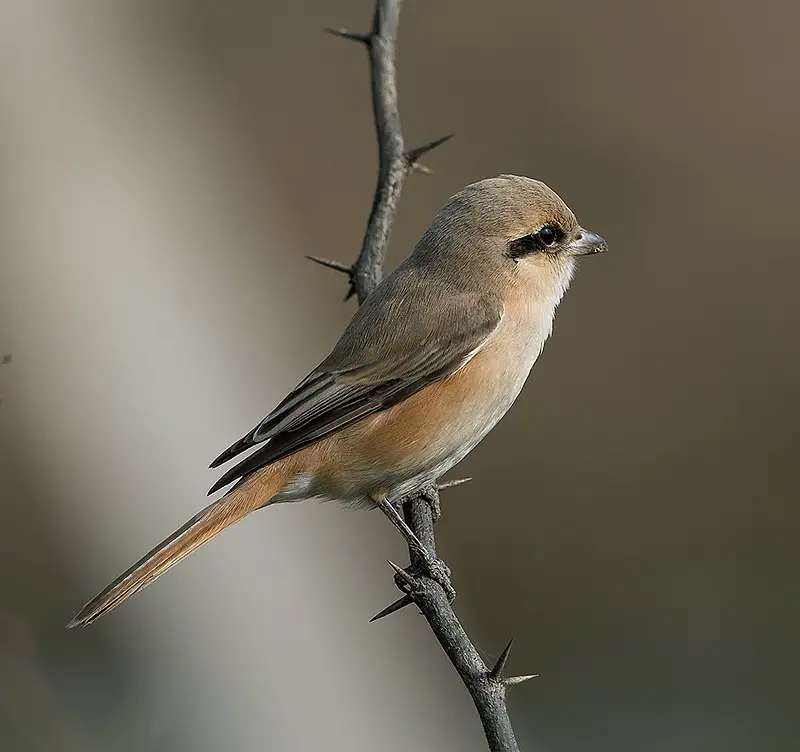
The Isabelline Shrike is a member of the shrike family, Laniidae, and was previously thought to be congeneric with the Red-backed or Red-tailed Shrikes.
It has an extensive range across many countries from Caspian Sea in Western Asia all the way eastward up to Central China’s Qaidam Basin.
During winter months it migrates southwards towards Africa and Arabia for warmer climates.
Its genus name ‘Lanius’ is derived from Latin meaning “butcher”, as its diet consists mainly of small insects and sometimes even lizards or sparrows.
The Isabelline Shrike can easily be identified by its brownish grey coloration along with black wings having white wingtips plus two white bars on each side of their tail feathers.Scientific classification:
| Kingdom | Animalia |
| Phylum | Chordata |
| Class | Aves |
| Order | Passeriformes |
| Family | Laniidae |
| Genus | Lanius |
| Species | L. isabellinus |
Also Featured In: Gujarati Birds, Birds that Live in Rajasthan
35. Brown-Necked Raven
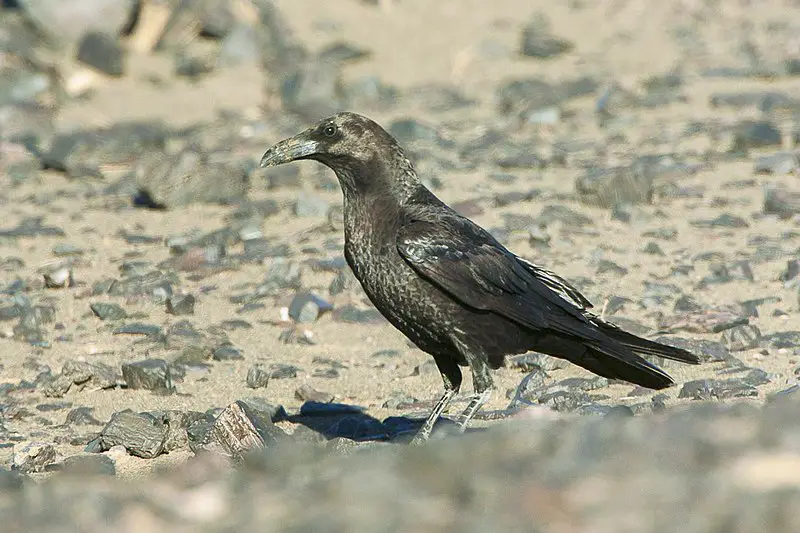
The Brown-necked Raven is a sturdy, large bird. It has an average length of 52 – 56 cm and similar proportions to the Common Raven but with a smaller bill.
Its distinct brownish black head and throat give it its name; the rest of its plumage consists of grey on the back, wings and tail feathers, as well as white underparts.
This species can be found in parts of North Africa, Asia Minor and across most areas in Iran.
They have also been known to inhabit forest edges or other open woodlands where they feed mainly on small mammals such as rodents, lizards, insects or even carrion when necessary for survival.
The Brown-necked raven is highly intelligent birds that form strong family bonds which last until death do them part.Scientific classification:
| Kingdom | Animalia |
| Phylum | Chordata |
| Class | Aves |
| Order | Passeriformes |
| Family | Corvidae |
| Genus | Corvus |
| Species | C. ruficollis |
36. Saxaul Sparrow
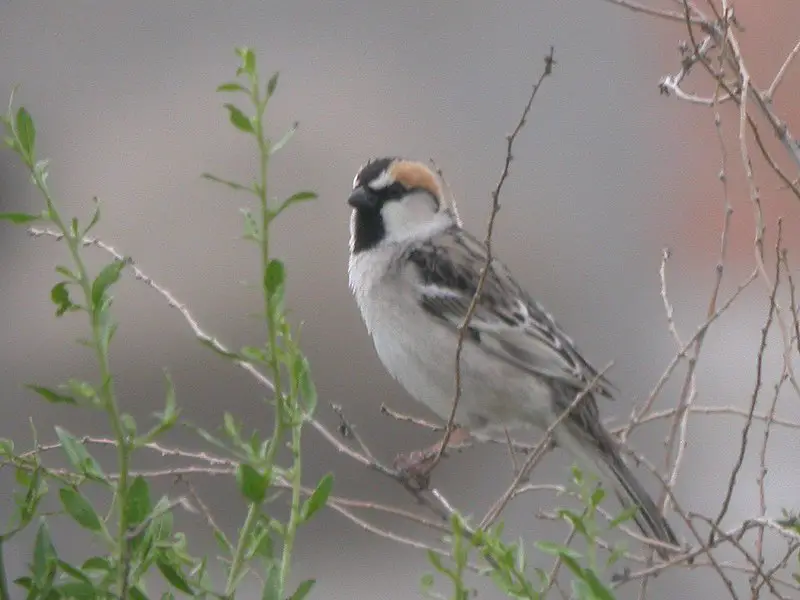
The Saxaul Sparrow is a passerine bird of the sparrow family Passeridae, native to Central Asia. They are relatively large compared to other types of sparrows, measuring between 14-16 centimeters and weighing around 25-32 grams.
Their plumage varies from dull grey to sandy brown with pale legs. Females possess less vibrant plumage than males and lack the black stripes on their bills that characterize male birds.
Saxaul Sparrows inhabit open areas such as steppes or deserts where they forage for food including seeds, small insects, fruits and buds among others items found in these habitats..
Due to its wide range across central Asian countries it has been designated by IUCN as Least Concern status since 2004 .Scientific classification:
| Kingdom | Animalia |
| Phylum | Chordata |
| Class | Aves |
| Order | Passeriformes |
| Family | Passeridae |
| Genus | Passer |
| Species | P. ammodendri |
Also Featured In: Kyrgyzstan Birds,
37. White-Crowned Penduline Tit
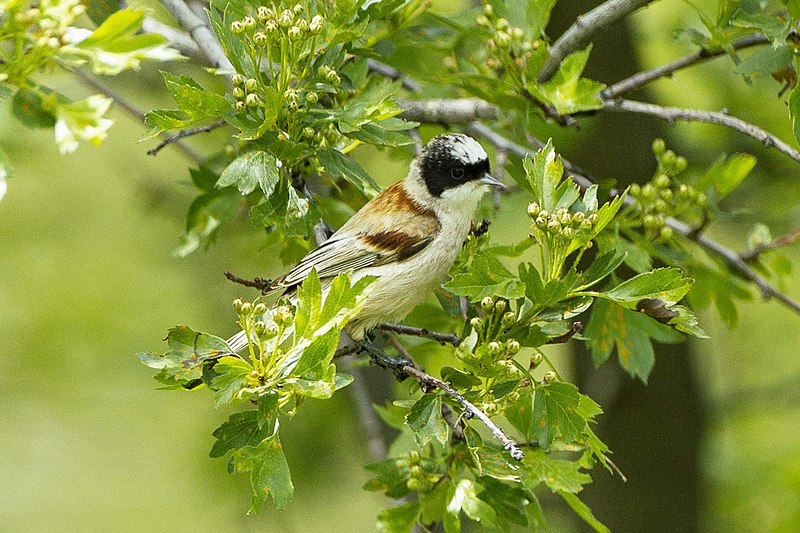
The white-crowned penduline tit is a species of bird found in various parts of Asia such as Afghanistan, China, India, Kazakhstan and Tajikistan. This small bird typically lives in boreal forests or temperate woodlands.
They have distinctive black upperparts which contrast with the bright yellow underparts and white crowns on their heads.
These birds mainly feed off insects but also consume berries from time to time. White-crowned penduline tits are very active during daylight hours when they can be seen gathering food around trees or shrubs near water sources like streams or ponds.
During winter months these birds may form flocks with other tit species for protection against predators while searching for food together across large areas of land.
Overall these beautiful little birds make wonderful additions to any backyard aviary.Scientific classification:
| Kingdom | Animalia |
| Phylum | Chordata |
| Class | Aves |
| Order | Passeriformes |
| Family | Remizidae |
| Genus | Remiz |
| Species | R. coronatus |
38. Finsch’s Wheatear
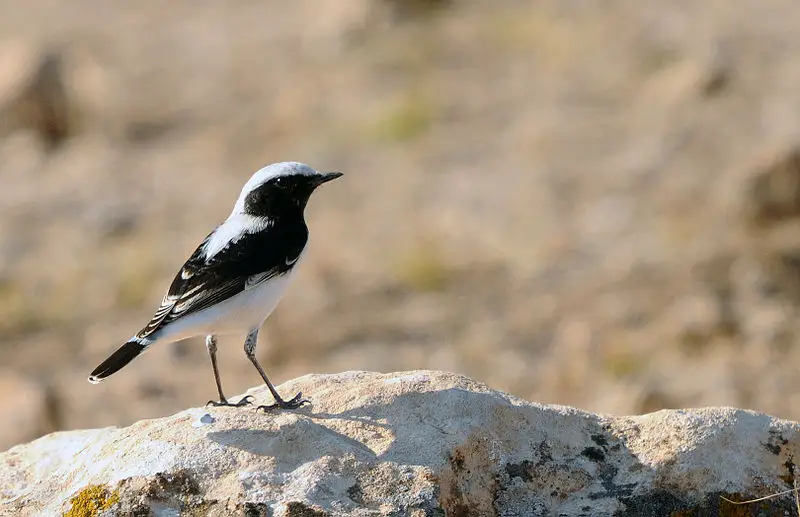
Finsch’s wheatear is a small passerine bird from the family Muscicapidae, found in semi-desert and stony hillside areas of Turkey to Afghanistan and western Pakistan.
It has an average length of around 15–16 cm and feeds on insects as its primary food source.
The male Finsch’s Wheatear is generally greyish brown above with white underparts while the female usually appears more buffy or yellowish below.
During breeding season it can be seen displaying typical flycatcher behaviour; hovering before diving down onto prey.
As a migratory species, this attractive little bird travels short distances during winter months to warmer climates within their range where they often form large roosting flocks at night time near water sources such as rivers or lakesides.Scientific classification:
| Kingdom | Animalia |
| Phylum | Chordata |
| Class | Aves |
| Order | Passeriformes |
| Family | Muscicapidae |
| Genus | Oenanthe |
| Species | O. finschii |
39. Rollers

Rollers are birds that belong to the Coraciidae family. They are known for their aerial acrobatics which they display during courtship or territorial flights, earning them their name.
Rollers share similarities with crows in terms of size and shape, but they have a more vibrant appearance like kingfishers and bee-eaters — blues and pinkish or cinnamon browns being the most common colors.
These birds also have an interesting feature: two inner front toes connected together while the outer ones remain separated from each other.
Their impressive flying skills make rollers one of nature’s beauties, captivating us all with its colorful feathers and graceful moves.Scientific classification:
| Kingdom | Animalia |
| Phylum | Chordata |
| Class | Aves |
| Order | Coraciiformes |
| Family | Coraciidae Rafinesque, 1815 |
Also Featured In: Comoros birds, Most Common Nature Birds
40. Sandpiper
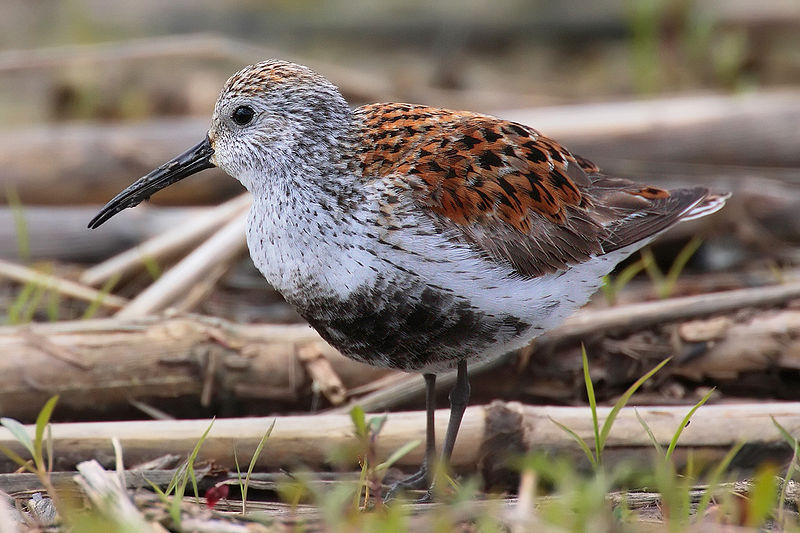
Sandpiper is a type of wading bird that belongs to the family Scolopacidae. It is a diverse family that includes various species such as curlew and snipe.
Sandpipers have different bill lengths that allow them to feed on small invertebrates and creatures found in mud or soil.
Due to this diversity, different species can coexist in the same habitat without competing for food.
Sandpipers are commonly found near the coast but are also found in other wetland environments.
They are known for their slender legs, long beak, and streamlined body that enables them to move easily in and out of water.
Sandpipers are a unique and fascinating bird species that are interesting to observe in their natural habitat.Scientific classification:
| Kingdom | Animalia |
| Phylum | Chordata |
| Class | Aves |
| Order | Charadriiformes |
| Suborder | Scolopaci |
| Family | Scolopacidae Rafinesque, 1815 |
Also Featured In: Birds You’ll Find in the Sea, Turkey Birds You Should Know
41. Little Grebe
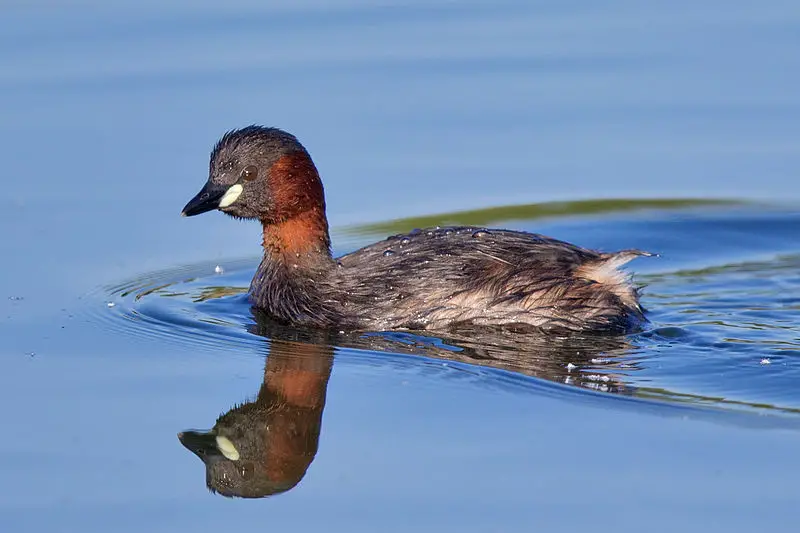
The little grebe, also known as dabchick, belongs to the grebe family and is a small water bird. It gets its genus name from the Ancient Greek words for ‘fast’ and ‘to sink under’.
The specific name ruficollis means ‘red-necked’ in Latin. With a length of 23 to 29 centimetres, it is the smallest member of the grebe family.Scientific classification:
| Kingdom | Animalia |
| Phylum | Chordata |
| Class | Aves |
| Order | Podicipediformes |
| Family | Podicipedidae |
| Genus | Tachybaptus |
| Species | T. ruficollis |
Also Featured In: Italian Birds You Should Know, Native Birds of Kazakhstan
42. Red-Fronted Serin
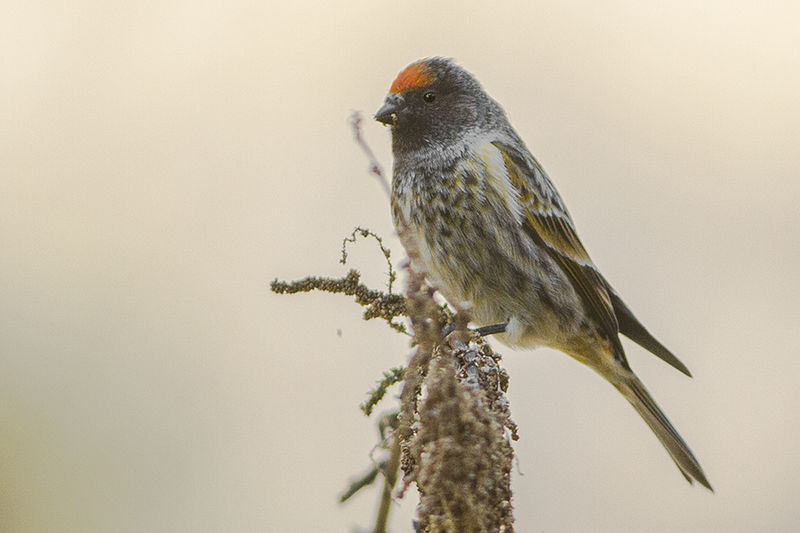
The Red-fronted serin, also known as the fire-fronted serin, is a tiny passerine bird belonging to the finch family. It has a preference for mountainous regions and typically grows up to 11-12 cm in length.
This bird can be found breeding in areas such as the Caucasus, Turkey, and Iran, with rare sightings of it reaching the Greek Eastern Aegean Islands during winter. Apart from this, the Red-fronted serin can also be found in the Ladakh region of India.
With its striking red front, this bird is a sight to behold in its natural habitat.Scientific classification:
| Kingdom | Animalia |
| Phylum | Chordata |
| Class | Aves |
| Order | Passeriformes |
| Family | Fringillidae |
| Subfamily | Carduelinae |
| Genus | Serinus |
| Species | S. pusillus |
Also Featured In: Birds That Live in Iraq, Birds of Ladakh
43. Rufous-Naped Tit
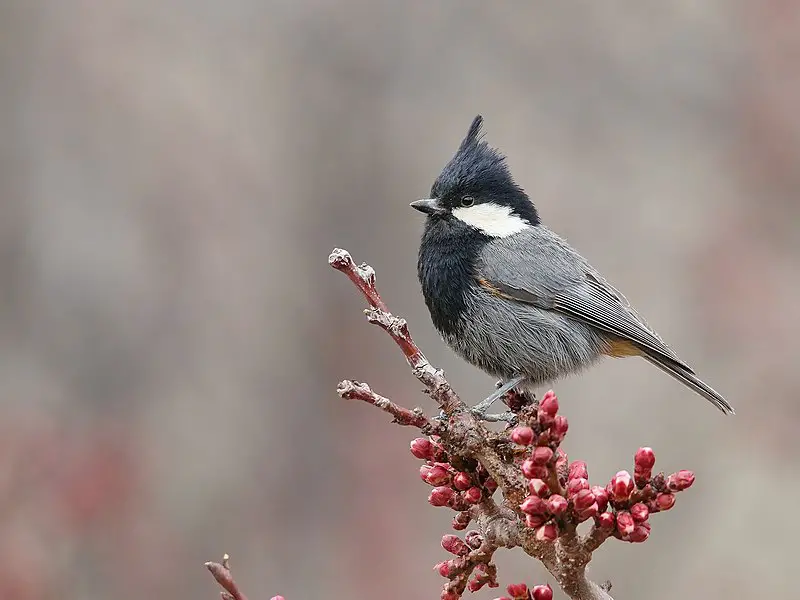
The Rufous-naped tit or black-breasted tit, a member of the Paridae family, is a songbird species found mainly in the western Himalayas.
With a wide-ranging habitat, it was previously placed under Parus genus and often considered as conspecific with the Rufous-vented tit or P. rubidiventris.
These small, dark-grey or black-breasted birds are known for their distinct reddish-brown nape and can be seen flitting through the forests, gardens, and shrubby areas in search of insects and berries.
Their natural habitats include the pine and oak forests at elevations of 2000-4600 meters.
The Rufous-naped tit is an essential part of the Himalayan ecosystem, where it plays a vital role in seed dispersal and pest control.Scientific classification:
| Kingdom | Animalia |
| Phylum | Chordata |
| Class | Aves |
| Order | Passeriformes |
| Family | Paridae |
| Genus | Periparus |
| Species | P. rufonuchalis |
44. Waxwing Birds
Waxwing birds are known for their unique appearance with sleek brown and yellow feathers, crested heads, and signature tipped wings. They are native to North America and are often found in wooded areas with berry bushes.
These birds are named after their waxy red tips on their secondary feathers, which are believed to aid in flight.
Waxwings are social birds and often flock together in large groups. They are also known to be nomadic, moving to different regions to forage for food.
Their diet mainly consists of berries, fruits, and insects. Waxwings are known for their distinctive calls and songs, which they use to communicate with each other.
These birds play a vital role in the ecosystem as seed distributors and pollinators of certain plant species.
45. Ferruginous Duck
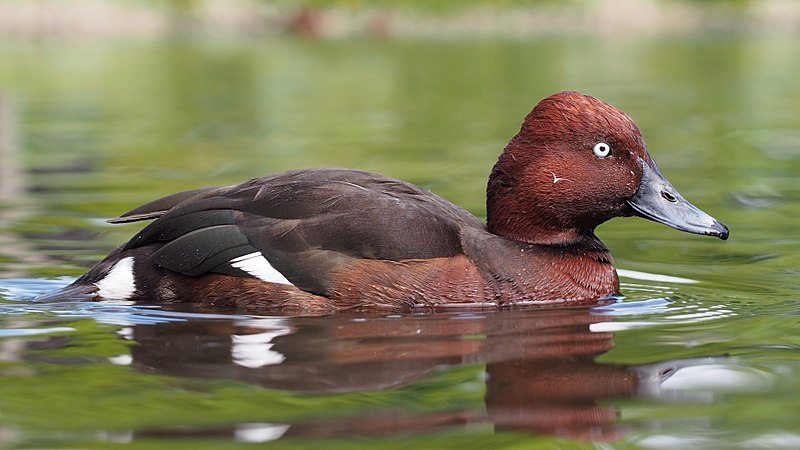
The Ferruginous duck, also called the Ferruginous pochard, is a diving duck found in Eurosiberia.
Its scientific name comes from the Greek word “aithuia” meaning unidentified seabird and the Russian word “nyrok” for duck.
The male duck has a dark chestnut plumage on its head and breast during breeding season. This medium-sized bird is commonly known as the common white-eye or white-eyed pochard.
This bird is known for its diving ability to search for food and can stay underwater for up to 30 seconds.
The Ferruginous duck is considered vulnerable due to habitat loss and hunting, and conservation efforts are being made to protect the species.Scientific classification:
| Kingdom | Animalia |
| Phylum | Chordata |
| Class | Aves |
| Order | Anseriformes |
| Family | Anatidae |
| Genus | Aythya |
| Species | A. nyroca |
Also Featured In: Common Serbian Birds, Common Birds in Tuscany
46. Pallas’s Grasshopper Warbler
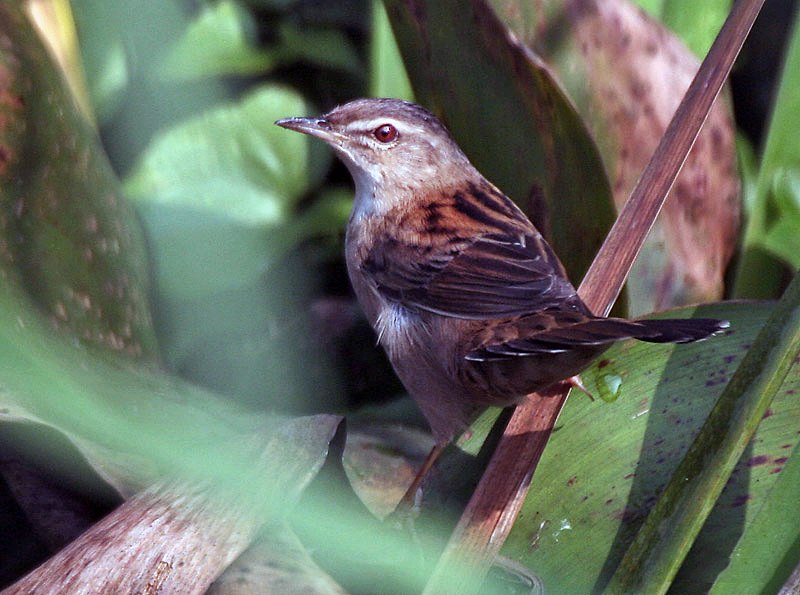
The Pallas’s grasshopper warbler, also known as the rusty-rumped warbler, is a migratory bird that breeds in the eastern Palearctic region.
It can be found in areas ranging from the Altai Mountains, Mongolia, and Transbaikalia to northeastern China and the Korean Peninsula, as well as islands located in the Sea of Okhotsk such as Sakhalin and Kuril Islands.
As its name suggests, the Pallas’s grasshopper warbler is similar to a warbler and is part of the grass warbler genus Helopsaltes.
During the winter months, this bird migrates to India and the surrounding areas.
Due to its migratory nature, the Pallas’s grasshopper warbler is often spotted in different parts of the world, making it a species of interest and importance for many bird watchers and conservationists.Scientific classification:
| Kingdom | Animalia |
| Phylum | Chordata |
| Class | Aves |
| Order | Passeriformes |
| Family | Locustellidae |
| Genus | Helopsaltes |
| Species | H. certhiola |
Also Featured In: Birds that Migrate to Sri Lankan,
47. Pallid Harrier
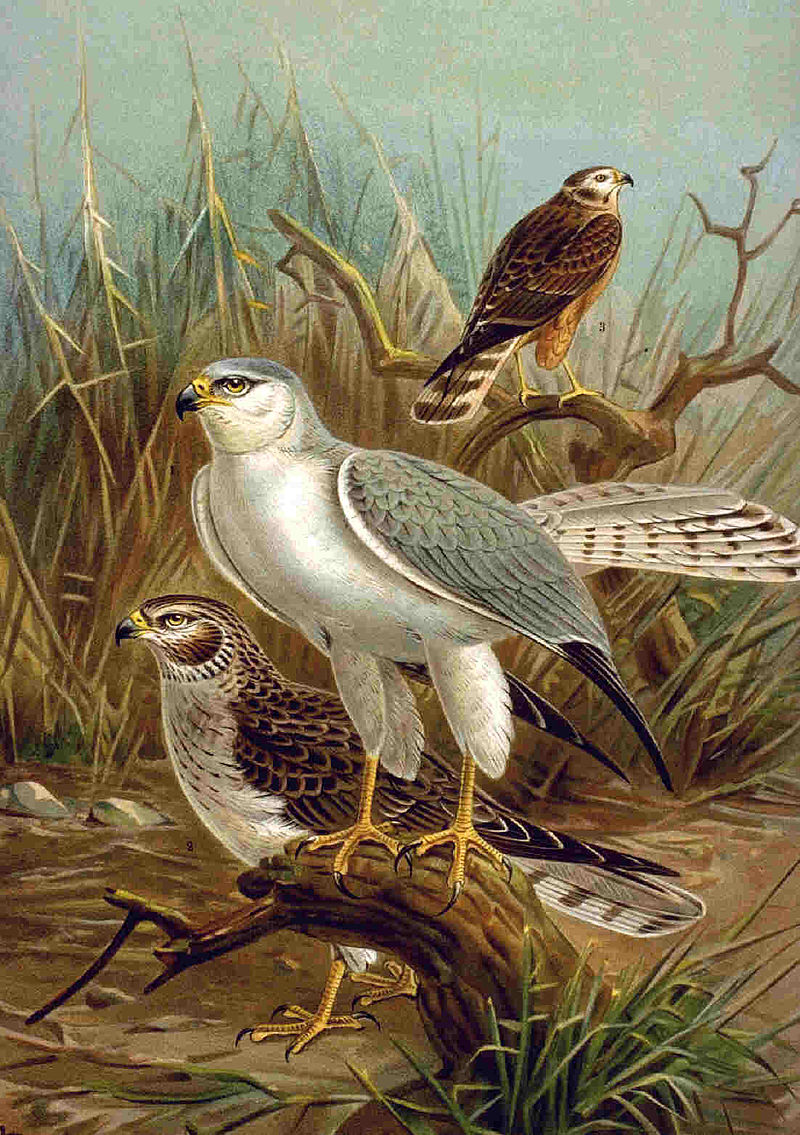
The Pallid harrier, also known as Circus macrourus, is a migratory bird of prey that belongs to the harrier subfamily.
Its name is derived from the Ancient Greek words kirkos and makros- referring to its circling flight and long-tailed structure, respectively.
This species breeds in the southern regions of eastern Europe and is known for its impressive aerial displays during courtship.
The Pallid harrier is also remarkable for its unique foraging behavior, as it typically preys on small mammals, insects, and birds while in flight.
Unfortunately, like many bird species, the Pallid harrier is under threat due to habitat loss and changes in land use practices.
Conservation efforts are underway to protect this stunning bird of prey and preserve its natural habitat for future generations to come.Scientific classification:
| Kingdom | Animalia |
| Phylum | Chordata |
| Class | Aves |
| Order | Accipitriformes |
| Family | Accipitridae |
| Genus | Circus |
| Species | C. macrourus |
Also Featured In: Armenian Birds You Should Know, European Birds
48. Pine Bunting
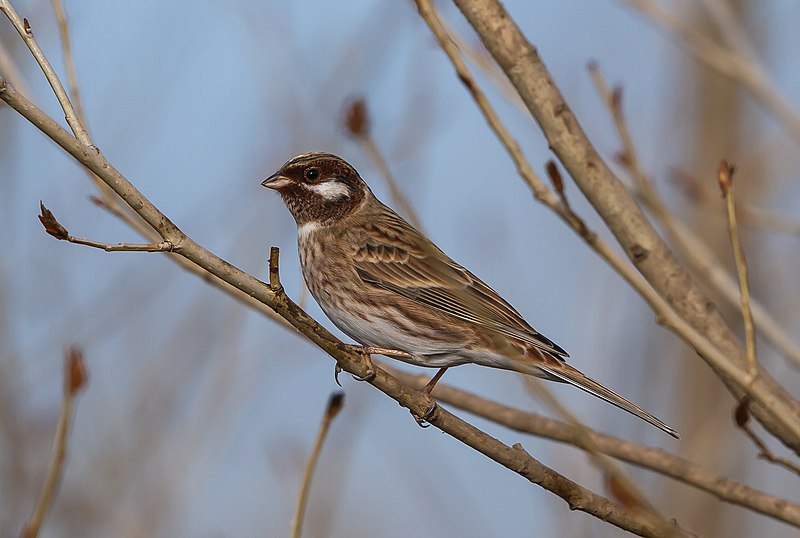
The Pine bunting is a strong passerine bird that belongs to the bunting family Emberizidae. It is found in Eurosiberia, specifically in areas east of the Urals.
The Emberiza genus name is derived from Old German Embritz, which means bunting.
Meanwhile, its specific name, leucocephalos, originated from Ancient Greek leukos, which means “white,” and kephalos, which means “headed.” The Pine bunting is considered robust and hardy.Scientific classification:
| Kingdom | Animalia |
| Phylum | Chordata |
| Class | Aves |
| Order | Passeriformes |
| Family | Emberizidae |
| Genus | Emberiza |
| Species | E. leucocephalos |
Also Featured In: Asian Birds,